35 Wild Animals in Colombia [Wildlife in Colombia]
Want to know more about the wildlife in Colombia?
Discover 35 wild animals in Colombia in this post, as well as interesting facts about them. 🇨🇴
Learn All About Colombian Animals
Ready to learn all about Colombian animals?
I’ve always been fascinated by animals, and by how they can be so different from one country to another. In this guide, we’ll focus on the many animals Colombia has on the land, in the sky, and underwater.
I’ve split the guide into 4 categories:
- Native animals of Colombia
- Endangered animals of Colombia
- What is Colombia national animal?
- How many animals native to Colombia?
Let’s dive in right away with our first category!
Native Animals of Colombia
Colombia is a transcontinental South American and North American country located in the northwestern part of South America: while it is largely a mainland country, it also rules over small islands scattered across the Pacific, the Caribbeans, and the Atlantic. It has the highest endemism on the planet (around 10 percent), and it used to be a Spanish colony. Also, there are more than 1,800 bird species in the country, which is more than the number of existent bird species in Europe and North America combined!). It is bordered by Brazil, Venezuela, Ecuador, Peru, and Panama, and its biggest and capital city is Bogotá, which counts more than 7,412,000 inhabitants (but more than 10,700,000 if you include the metropolitan area).
An interesting part of the country that I wanted to tackle is its wildlife. In light of that, I have listed the best of it, and I hope you will love learning what animals live in Colombia.
Here’s the Colombia animals list.
1. Amazon river dolphin
- Name: Amazon river dolphin
- Scientific name: Inia geoffrensis
- Conservation status:
The Amazon river dolphin, also known as the bufeo, the pink river dolphin, or the boto, is a species of toothed whale native to South America. It is the largest species of river dolphin on the planet, as adult males can reach 185 kg / 408 lb and 2.5 m / 8.2 ft.
This dolphin has staggering sexual dimorphism, with males being much longer and heavier than females. Compared to other toothed whales, it has a very wide diet, ranging from turtles and crabs to dozens of species of fish.
2. White-throated toucan
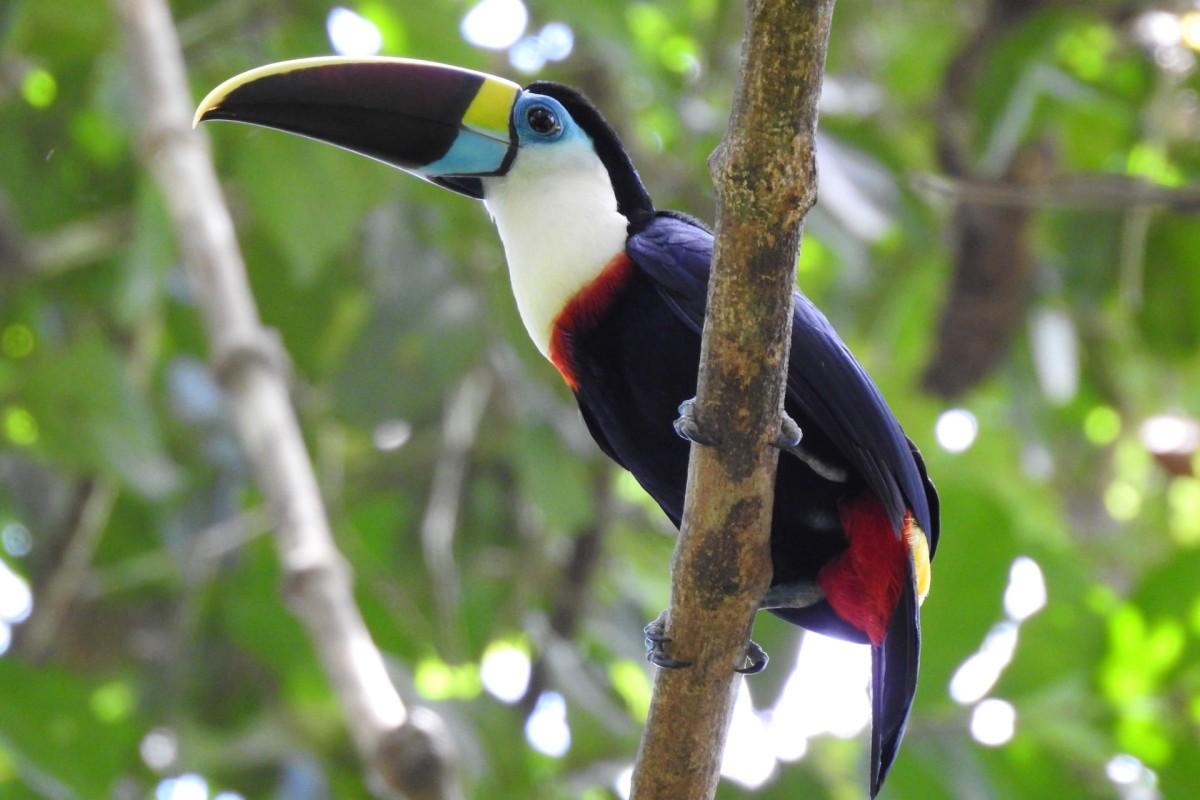
- Name: White-throated toucan
- Scientific name: Ramphastos tucanus
- Conservation status:
The white-throated toucan is a species of toucan native to the Amazon Basin in South America. It inhabits tropical humid forests, but can also occasionally be found in woodlands. Just like other toucans, this species has an unusually large beak.
Its name comes from its white throat, and it is very brightly marked. It usually does not fly for more than 100 m / 330 ft at a time, and it is sometimes kept as a pet, though that is illegal.
3. Spectacled bear
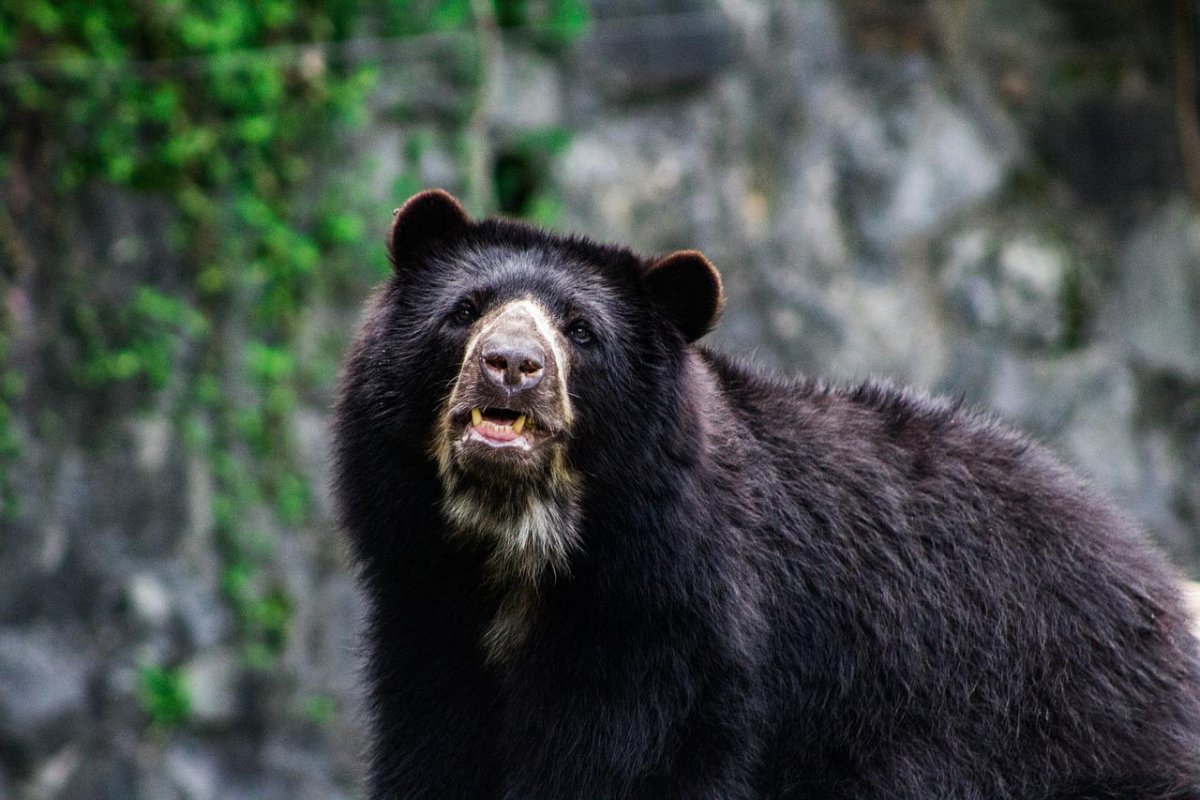
- Name: Spectacled bear
- Scientific name: Tremarctos ornatus
- Conservation status:
The spectacled bear, also known as the mountain bear, the Andean bear, or the Andean short-faced bear, is a rare species of bear native to South America. In fact, it is the only surviving species of bear native to the continent, and its closest relatives are all extinct. It is also the last remaining short-faced bear on the planet.
Its name comes from its light coloring, sometimes resembling eyeglasses.
4. Jaguarundi
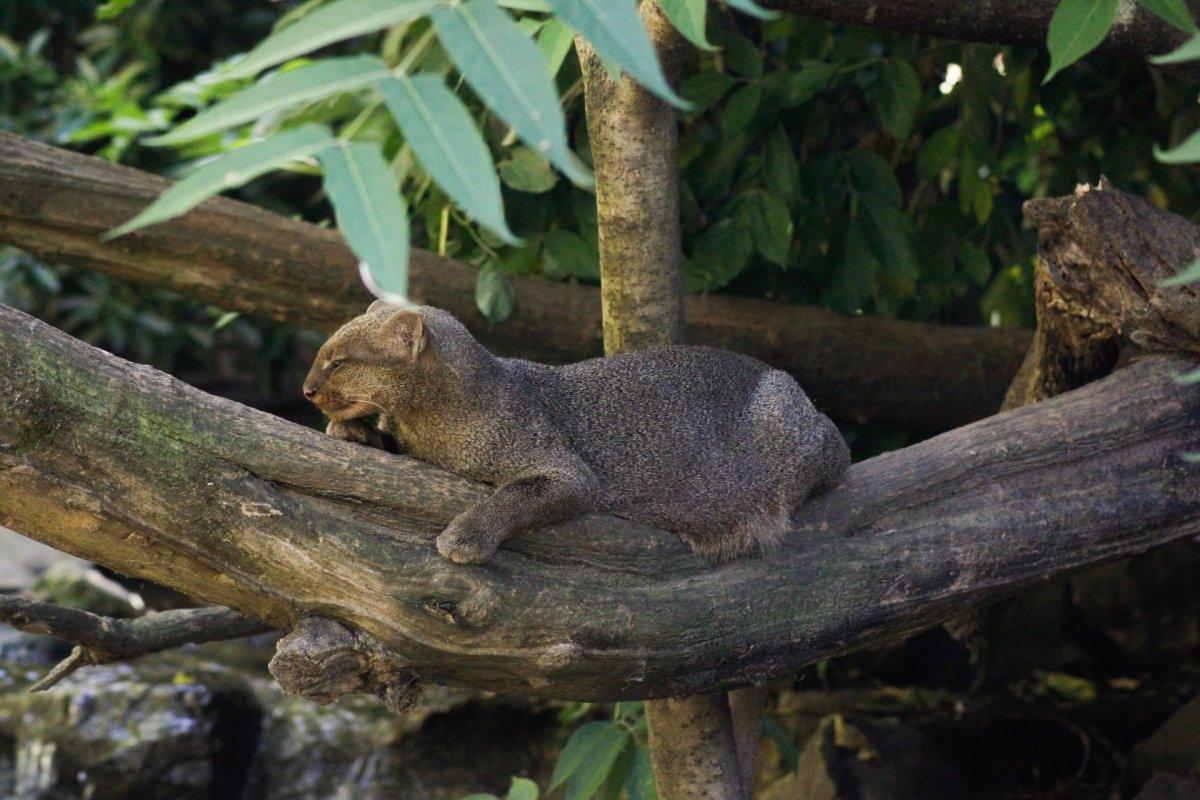
- Name: Jaguarundi
- Scientific name: Herpailurus yagouaroundi
- Conservation status:
The jaguarundi is a species of wild cat native to the Americas. It can be found in most Central and South American countries, from Mexico to Argentina. It has a slender build with short legs and is medium-sized.
This wild cat is very elusive and alert, and usually lives a solitary life, but can also be found in pairs. Opposite to most other cats, it is active during the day.
5. Hoffmann’s two-toed sloth
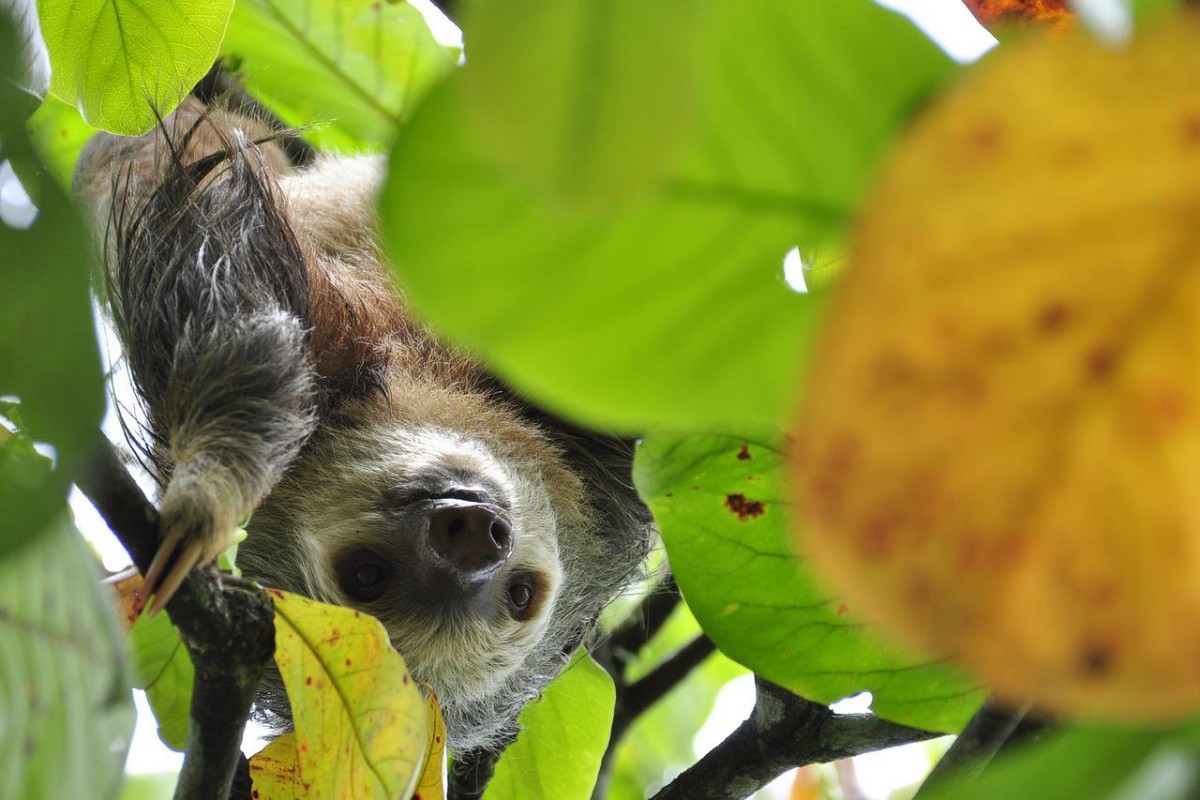
- Name: Hoffmann’s two-toed sloth
- Scientific name: Choloepus hoffmanni
- Conservation status:
Hoffmann’s two-toed sloth, also known as the northern two-toed sloth, is a species of sloth native to Central and South America. These animals, very unique, are reputed for their slowness.
This sloth is solitary, arboreal, and nocturnal, though it sleeps most of the time. It lives in rainforests and was named after the German naturalist Karl Hoffmann. It gets its name from the two toes at the end of each arm.
6. Golden poison frog
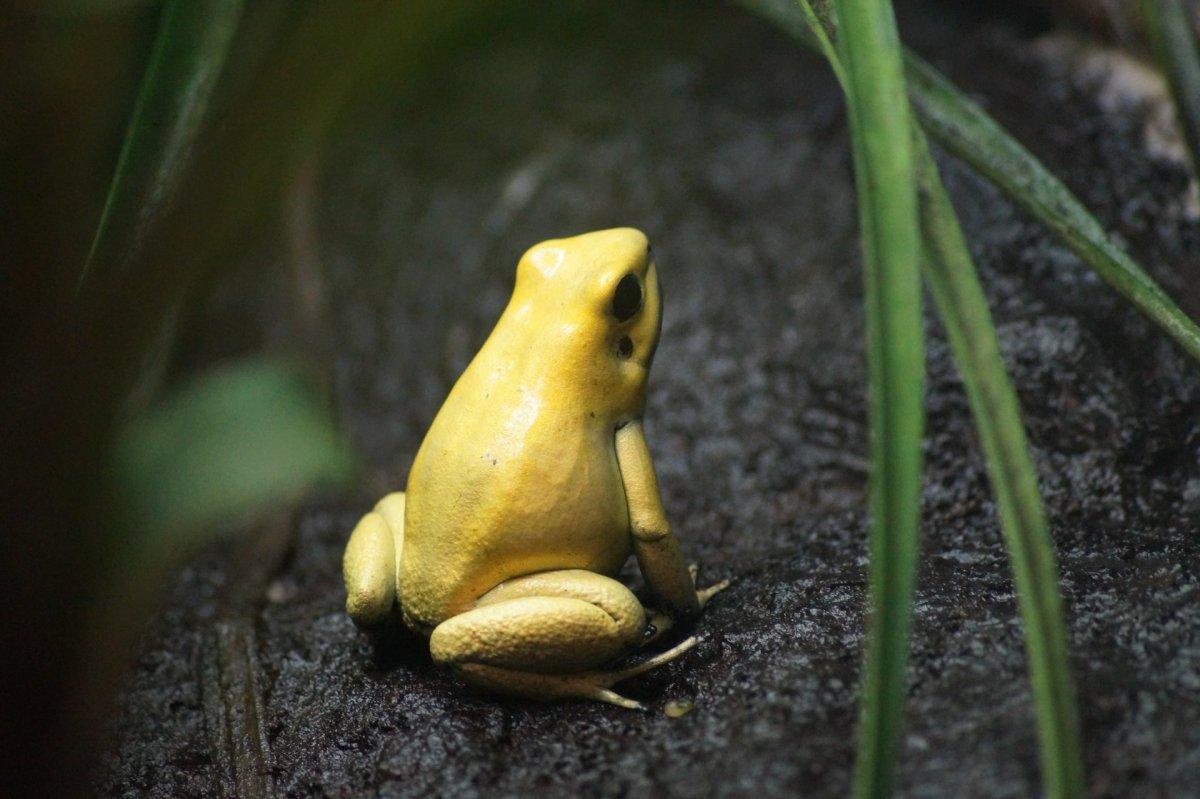
- Name: Golden poison frog
- Scientific name: Phyllobates terribilis
- Conservation status:
The golden poison frog, also known as the golden dart frog, the golden poison arrow frog, or the golden frog, is a species of poison dart frog endemic to the Pacific coast of Colombia. It is one of the most famous Colombian animals, and is the most poisonous vertebrate on the planet! Its entire body is covered with a toxin common to dart frogs. Like other dart frogs, it is poisonous and not venomous, meaning it does not voluntarily transfer the poison but uses it as self-defense.
7. Boa constrictor
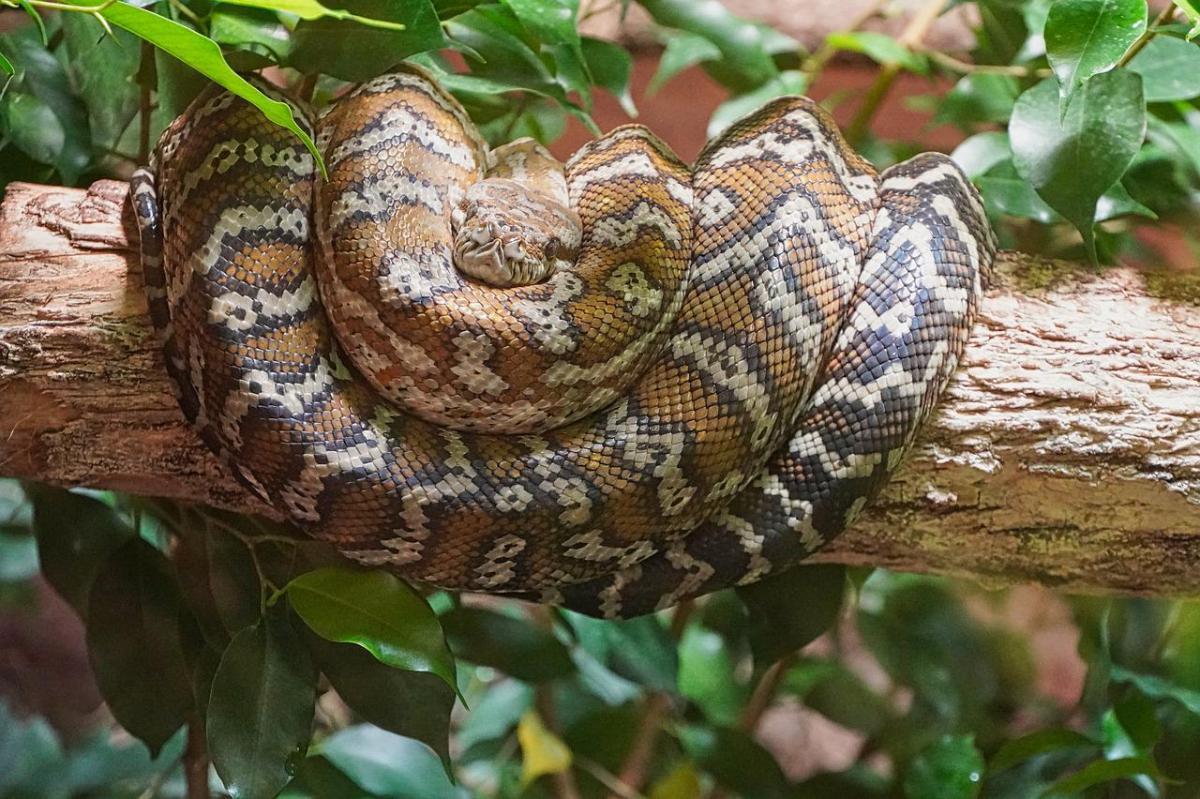
- Name: Boa constrictor
- Scientific name: Boa constrictor
- Conservation status:
The common boa, also known as the boa constrictor or the red-tailed boa, is one of the most famous species of snakes. It is not venomous, but strangles its prey instead, and has a very heavy body. Nowadays, it is quite common to find a boa constrictor in captivity or even kept as a pet, but it is native to tropical South America.
In Florida, this boa is considered an invasive species.
8. Orinoco crocodile
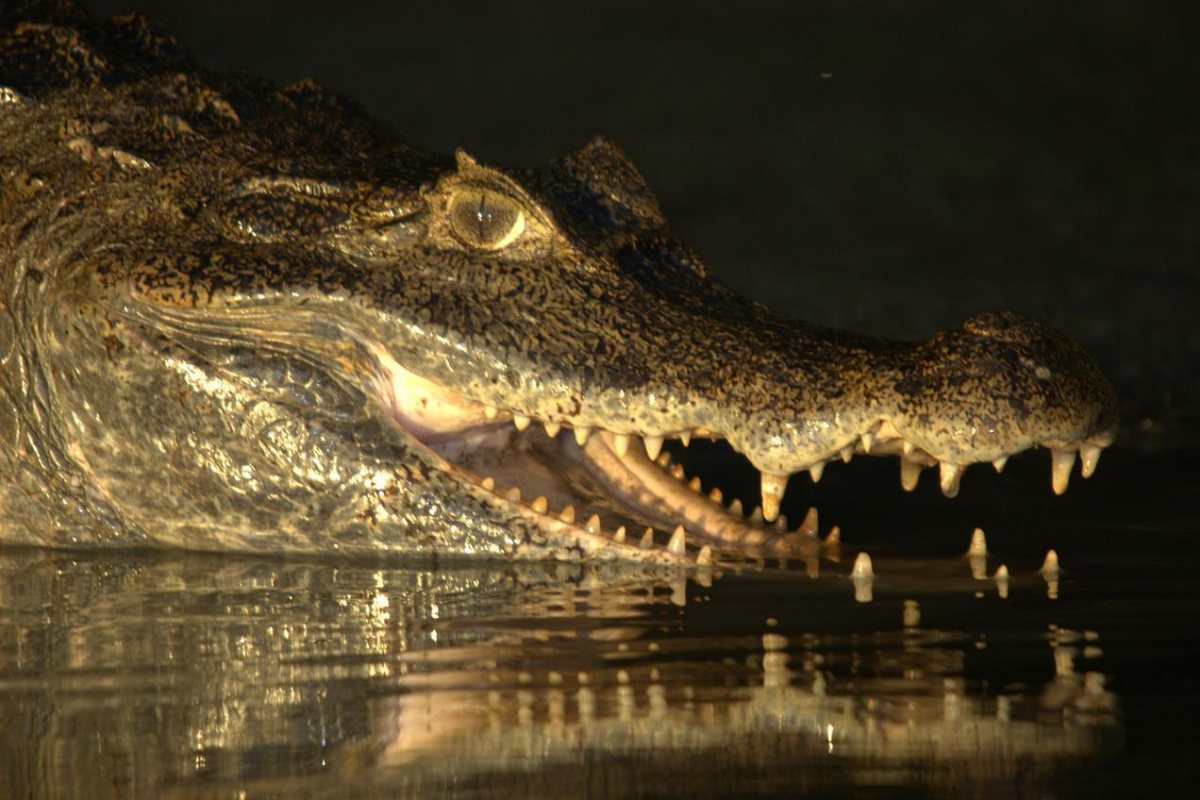
- Name: Orinoco crocodile
- Scientific name: Crocodylus intermedius
- Conservation status:
The Orinoco crocodile is a species of crocodile native to the Orinoco river basin in Colombia and Venezuela. It is currently considered critically endangered and is on the brink of extinction. Thousands of these crocodiles were slaughtered from the 1940s to the 1960s. Since the 1970s, it has been protected, but it has yet to recover, as it faces even more threats nowadays, such as pollution, dams, and the live animal trade.
9. Andean cock-of-the-rock
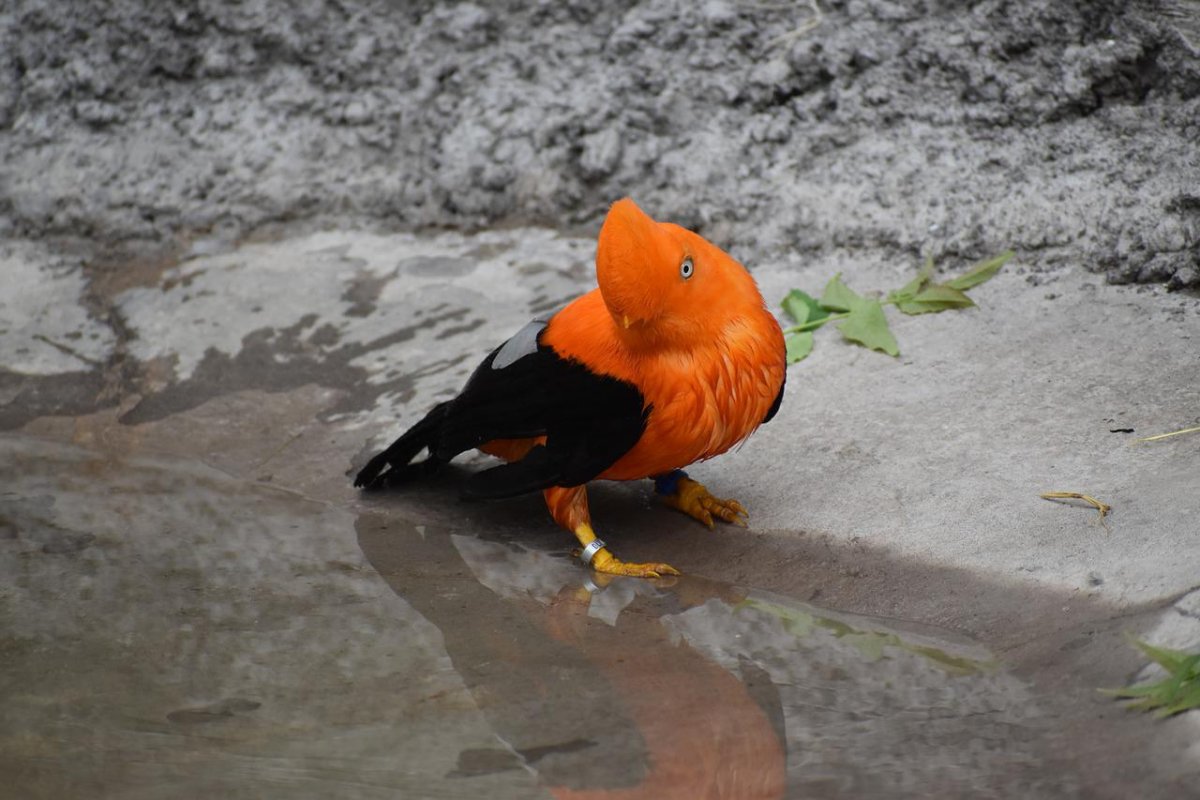
- Name: Andean cock-of-the-rock
- Scientific name: Rupicola peruvianus
- Conservation status:
The Andean cock-of-the-rock, also known as tunki in Quechua, is a species of passerine bird native to the Andean cloud forests in South America. It is considered the national bird of Peru, and has significant sexual dimorphism: males have a large crest with brilliant orange plumage, while females are browner and darker.
Its diet is made of fruits, reptiles, insects, mice, and amphibians, and it inhabits all the cloud forests across the Andes. Though it is considered of least concern, for now, it is threatened by habitat destruction.
10. Andean condor
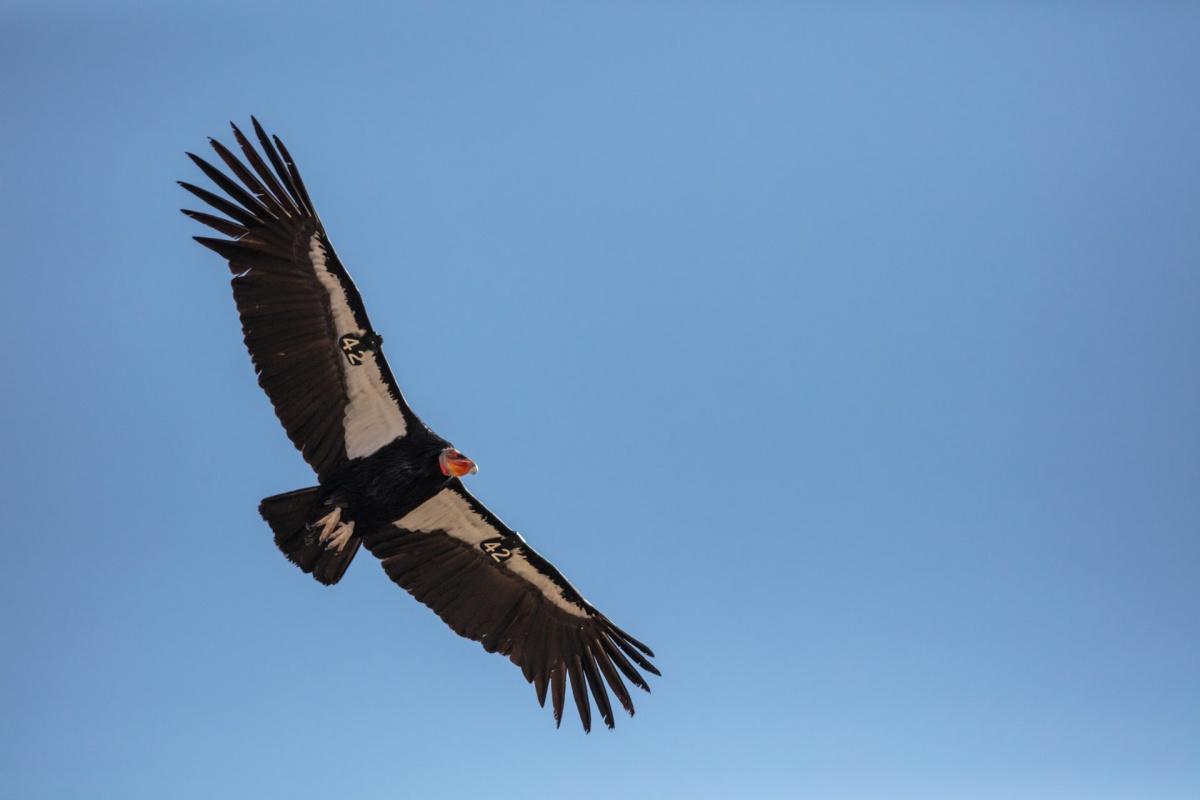
- Name: Andean condor
- Scientific name: Vultur gryphus
- Conservation status:
The Andean condor is one of the most iconic animals from South America. It is the largest bird of prey in the world and the largest flying bird as well, with a wingspan of 3.3 m / 10 ft 10 in.
It is a very large black vulture that primarily feeds on carrion. Its nest is at up to 5,000 m / 16,000 ft, in inaccessible areas. The Andean condor is truly a bird of all records, as it is also the longest-living bird, with a lifespan of more than 70 years!
11. Bald uakari
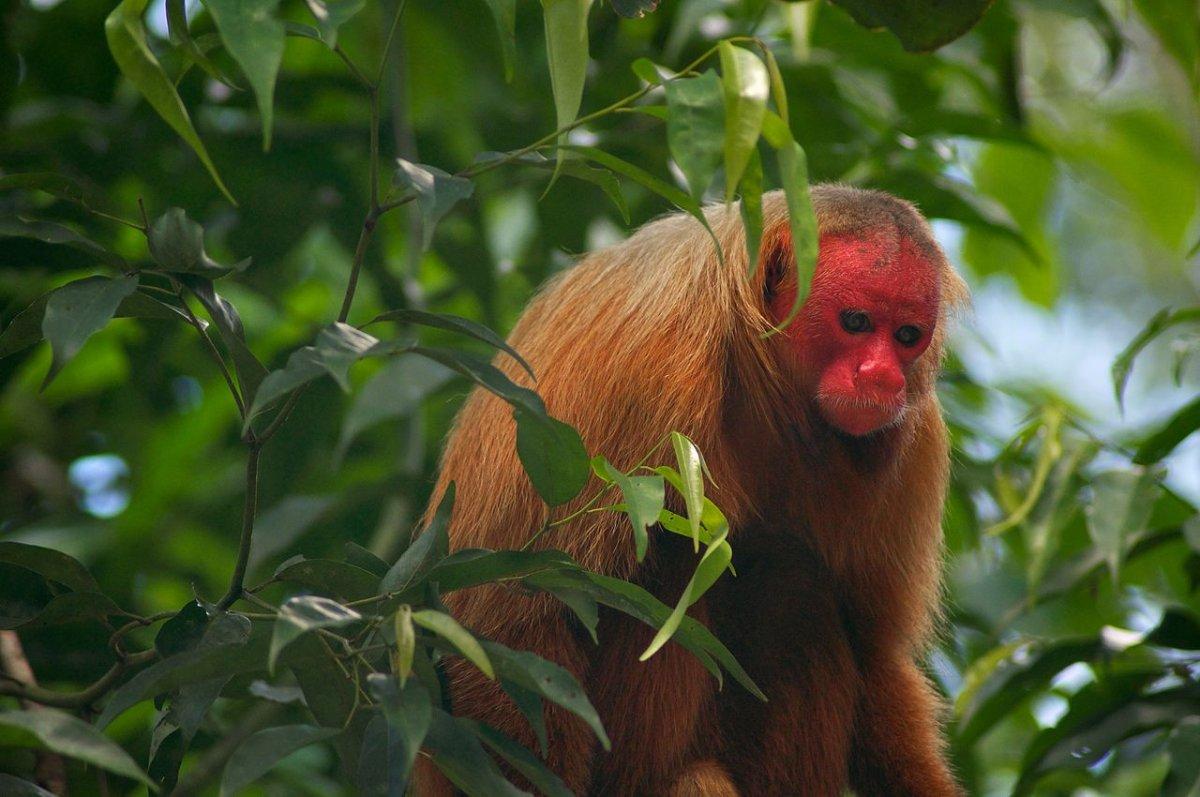
- Name: Bald uakari
- Scientific name: Cacajao calvus
- Conservation status:
The bald uakari, also known as the bald-headed uakari, is a small species of New World monkey. It is characterized by its bald and crimson face and its very short tail. It can only be found in scattered and small areas of Colombia, Peru, and Brazil, usually in wooded habitats.
The global population of the bald uakari has decreased by more than 30 percent over the last 30 years, mostly due to habitat destruction and hunting.
12. Spinner dolphin
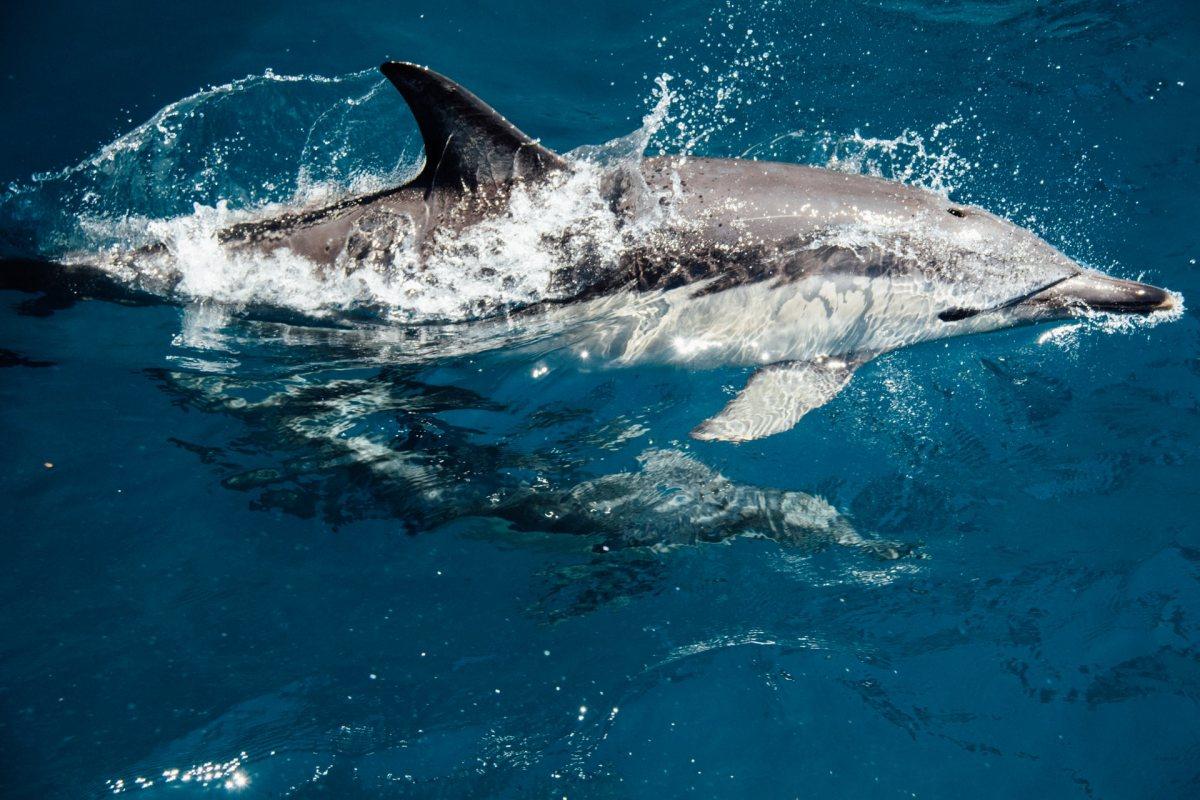
- Name: Spinner dolphin
- Scientific name: Stenella longirostris
- Conservation status:
The spinner dolphin is a small species of dolphin native to the off-shore tropical waters of the world. And because Colombia has a large coastline, it is also home to this famous acrobatic dolphin. It majorly feeds on sùamm fish, shrimps and squids, and will dive 200 to 300 m (656 to 984 ft) to feed on them if needed.
The 4 existing subspecies are the Central American dolphin, the Hawaiian spinner dolphin, the dwarf spinner dolphin, and the eastern spinner dolphin.
13. Hawksbill sea turtle
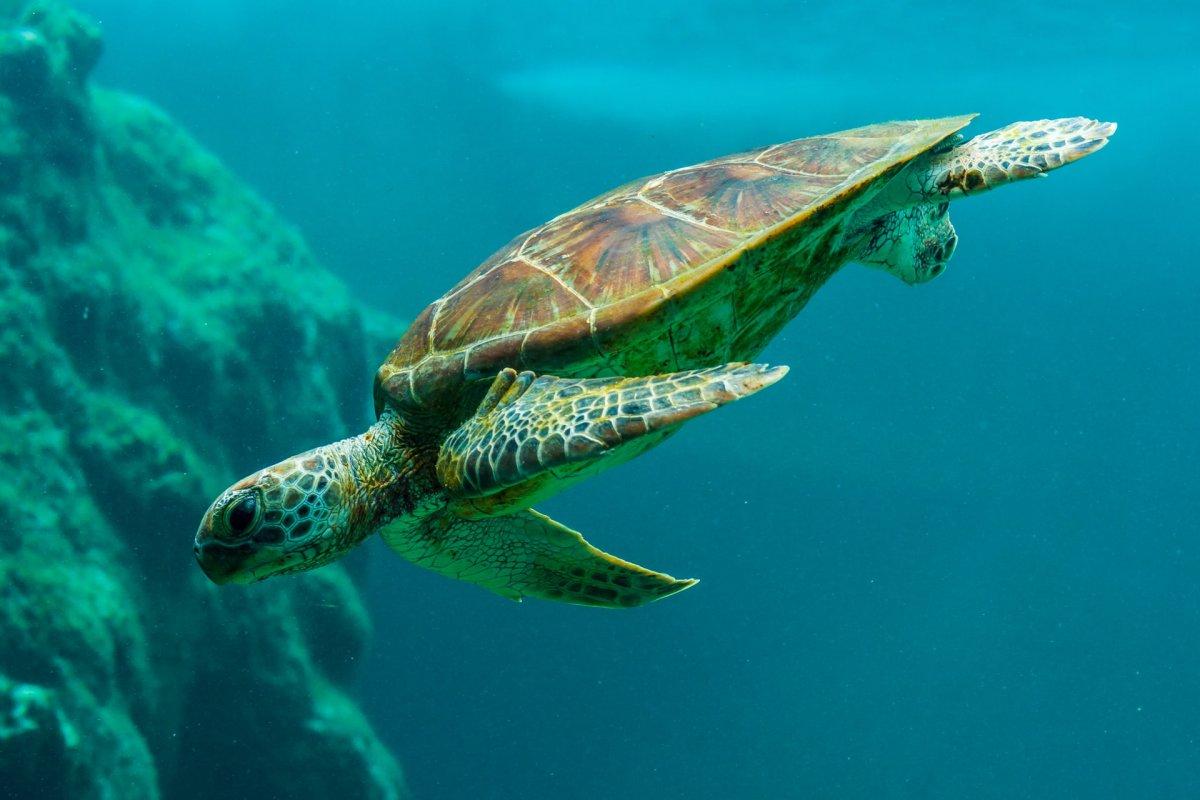
- Name: Hawksbill sea turtle
- Scientific name: Eretmochelys imbricata
- Conservation status:
The hawksbill sea turtle is one of the most famous species of sea turtle in the world. It is critically endangered due to killing by humans, pollution, and coastal development. On top of that, it has a very slow growth and reproductive rate.
Its body is perfectly adapted to swimming in the ocean, and its strong carapace is a great way to protect itself from predators. Usually, it can be seen in coral reefs and shallow lagoons.
14. South American tapir
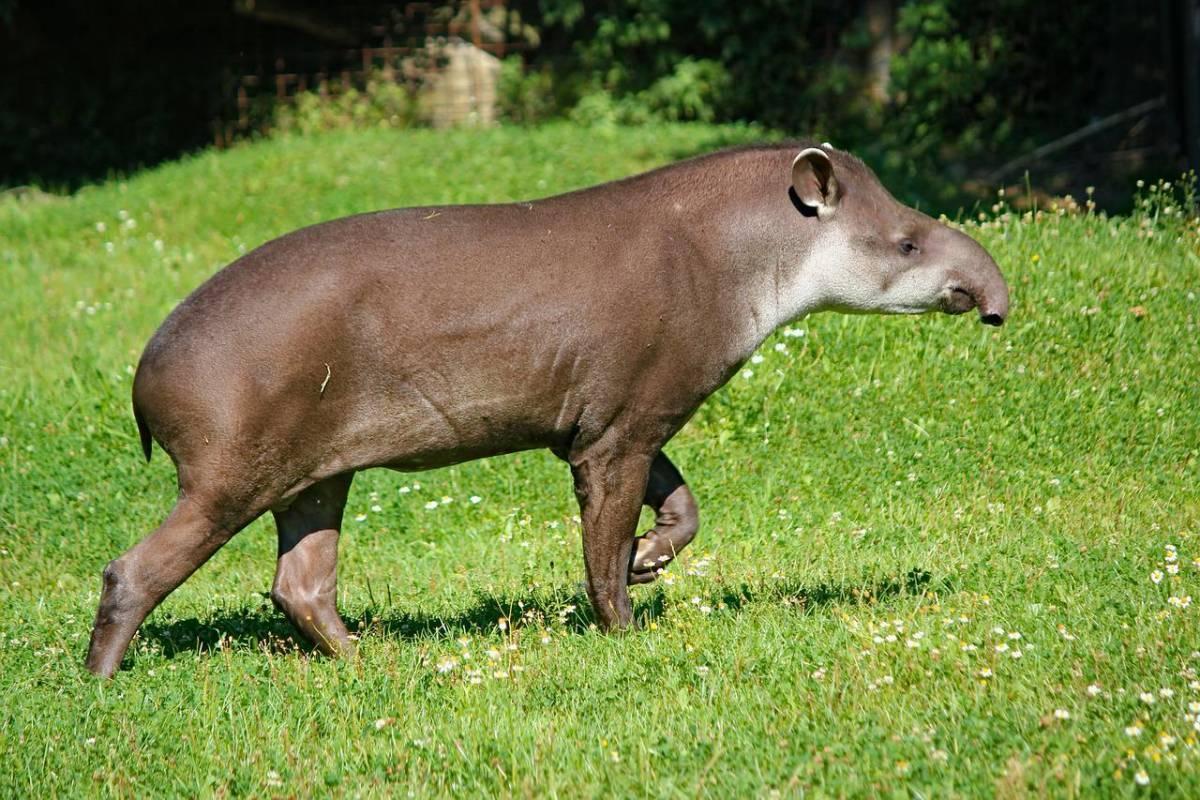
- Name: South American tapir
- Scientific name: Tapirus terrestris
- Conservation status:
The South American tapir, also known as the Amazonian tapir, the Brazilian tapir, the lowland tapir, or the maned tapir, is one of four species of tapir. It is native to South America and is the largest native terrestrial mammal in the Amazon. Despite that, it is the smallest tapir species.
This tapir is an herbivore that uses its mobile nose to feed on buds, shoots, leaves, and branches.
15. Caribbean monk seal
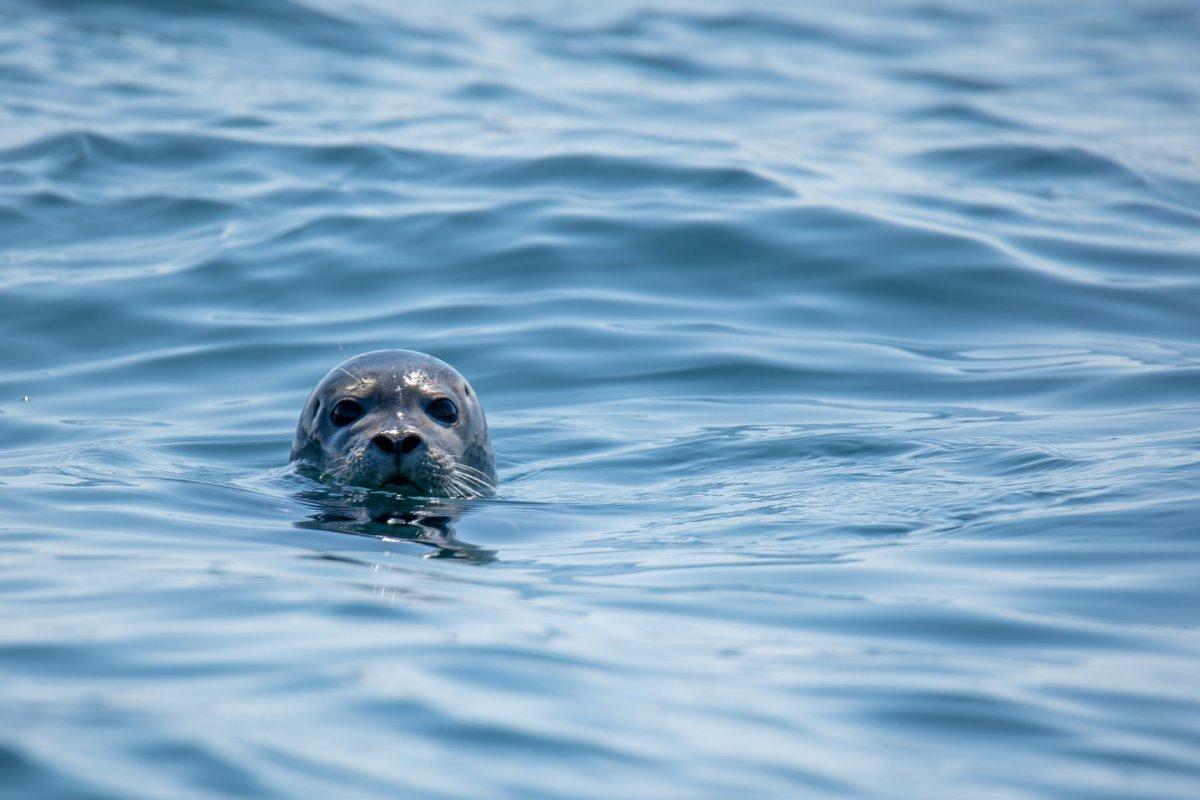
- Name: Caribbean monk seal
- Scientific name: Neomonachus tropicalis
- Conservation status:
The Caribbean monk seal, also known as the sea wolf or the West Indian seal, was a species of seal native to the Caribbean sea. Now, it is most likely extinct. Its main predators were humans and sharks, and it has disappeared due to overhunting and overfishing for its food source.
Other monk seal species, such as the Hawaiian monk seal and the Mediterranean monk seal, are endangered, and could very well disappear as well in the next decades.
16. Emerald toucanet
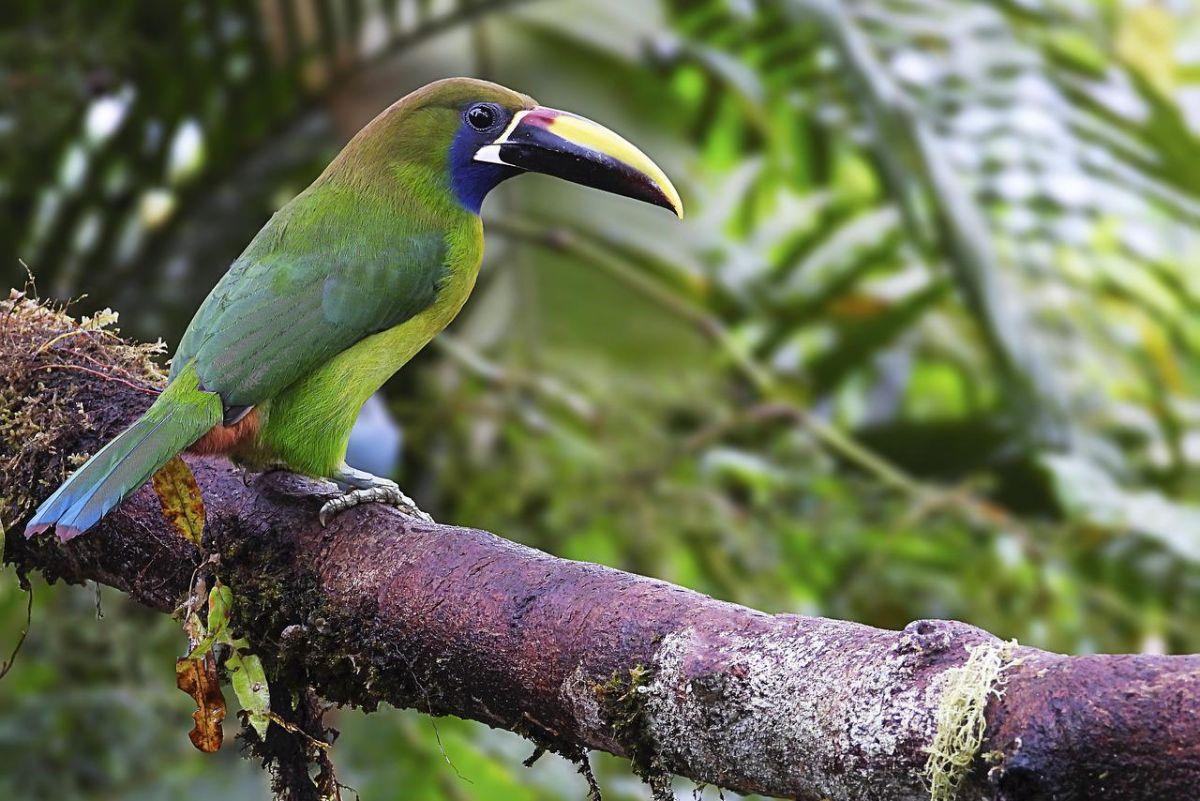
- Name: Emerald toucanet
- Scientific name: Aulacorhynchus prasinus
- Conservation status:
You have most likely already heard of toucans, but did you know about the toucanets? The emerald toucanet is a species of bird that looks like a small toucan. The adult is 30 to 35 cm / 12 to 14 in, and it has a black and yellow bill.
This toucanet lives in humid forests, usually at higher elevations. It moves as part of a flock of 5 to 10 birds with one leader.
17. West Indian manatee
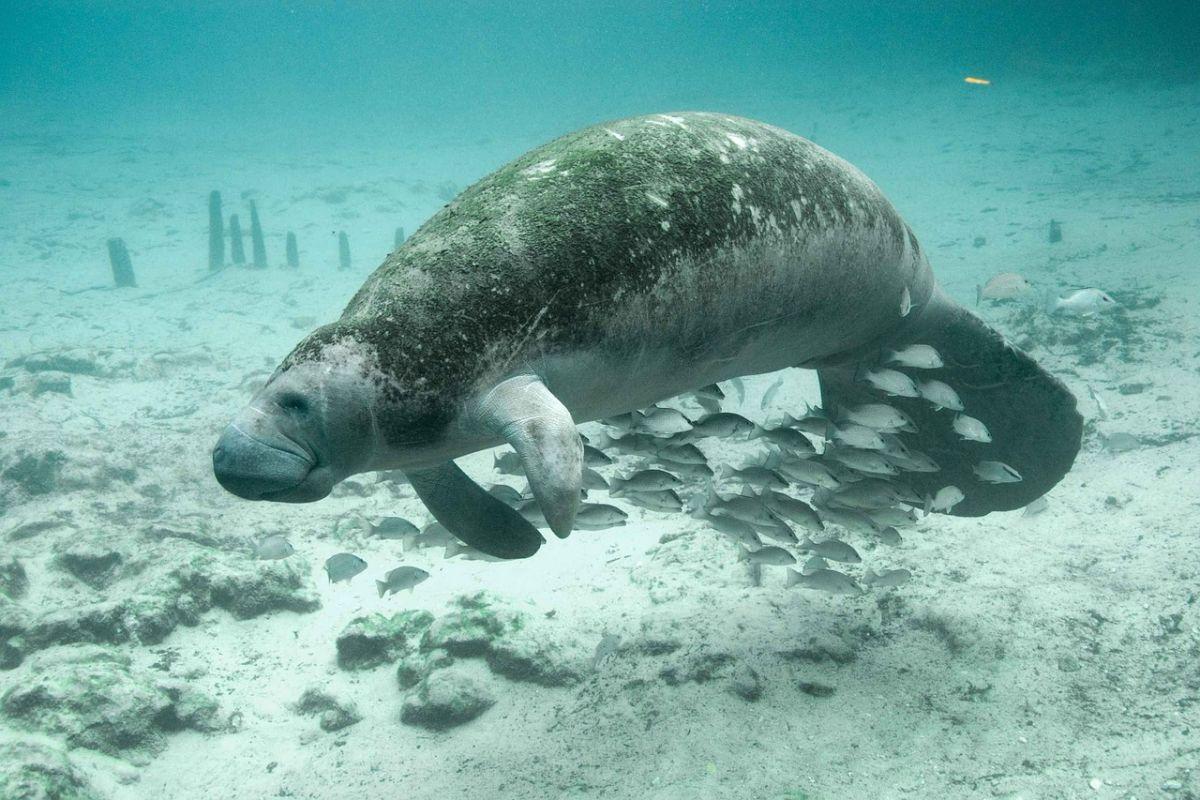
- Name: West Indian manatee
- Scientific name: Trichechus manatus
- Conservation status:
The West Indian manatee, also known as the North American manatee, is a species of manatee that can be divided into two more subspecies: the Florida manatee and the Caribbean manatee. It is the largest member of the order Sirenia, which also includes the dugong.
This manatee is an herbivore that highly relies on its vibrissae covering all of its body: it is the only way it can feed and navigate.
18. Jaguar
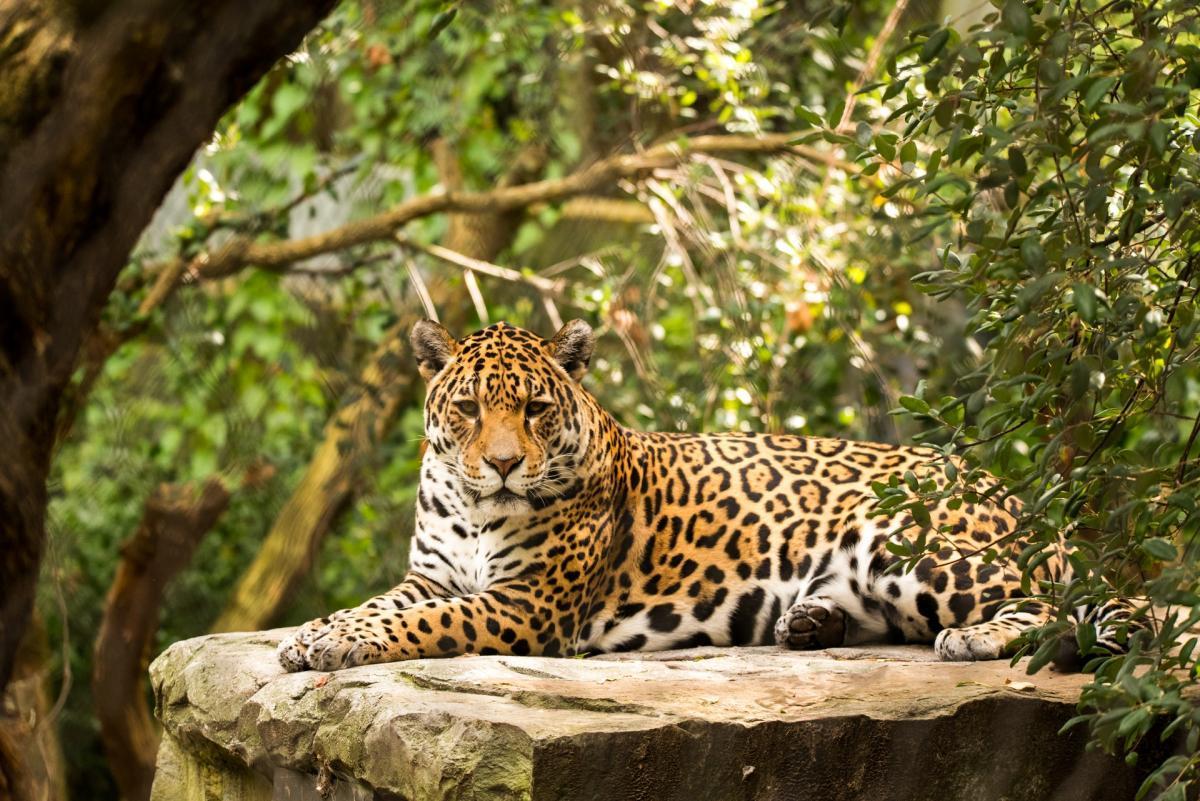
- Name: Jaguar
- Scientific name: Panthera onca
- Conservation status:
The jaguar is one of the most iconic animals from South America. It is a large species of wild cat and the only species of panther native to the Americas. It can be found throughout the majority of Central and South America, usually in dense forests. However, its former range is much, much larger than its current range, as it used to be seen as far as the southern United States and southern Argentina.
19. Southern tamandua
- Name: Southern tamandua
- Scientific name: Tamandua tetradactyla
- Conservation status:
The southern tamandua, also known as the lesser anteater or the collared anteater, is a species of anteater native to the island of Trinidad in the Caribbean Sea and to mainland South America. It inhabits different environments such as savannas or forests and lives a solitary life.
As its name suggests, this tamandua feeds on ants, but also bees and termites. To find food, it will break insect nests with its very strong foreclaws, which it also uses to defend itself.
20. Olinguito
- Name: Olinguito
- Scientific name: Bassaricyon neblina
- Conservation status:
The olinguito is a species of mammal native to the forests of the Andes in the western parts of Ecuador and Colombia. It is part of the raccoon family but is a species on its own. Its Spanish name “neblina” refers to the cloud forest habitat it can usually be seen in.
The olinguito was discovered very recently, in 2013, and it was the first discovery of a carnivorous mammal species in the Americas in 35 years.
21. Lucifer titi
- Name: Lucifer titi
- Scientific name: Cheracebus lucifer
- Conservation status:
The Lucifer titi is a species of titi, a sort of New World monkey, native to South America. It can be found in Colombia, Brazil, Ecuador, and Peru. It lives in a very restrictive area, mostly in lowland Colombian Amazonia at up to around 500 m / 1,600 ft.
This monkey has a blackish pelage, but it also has lots of red hair on the flanks and on the back.
22. Fer-de-lance
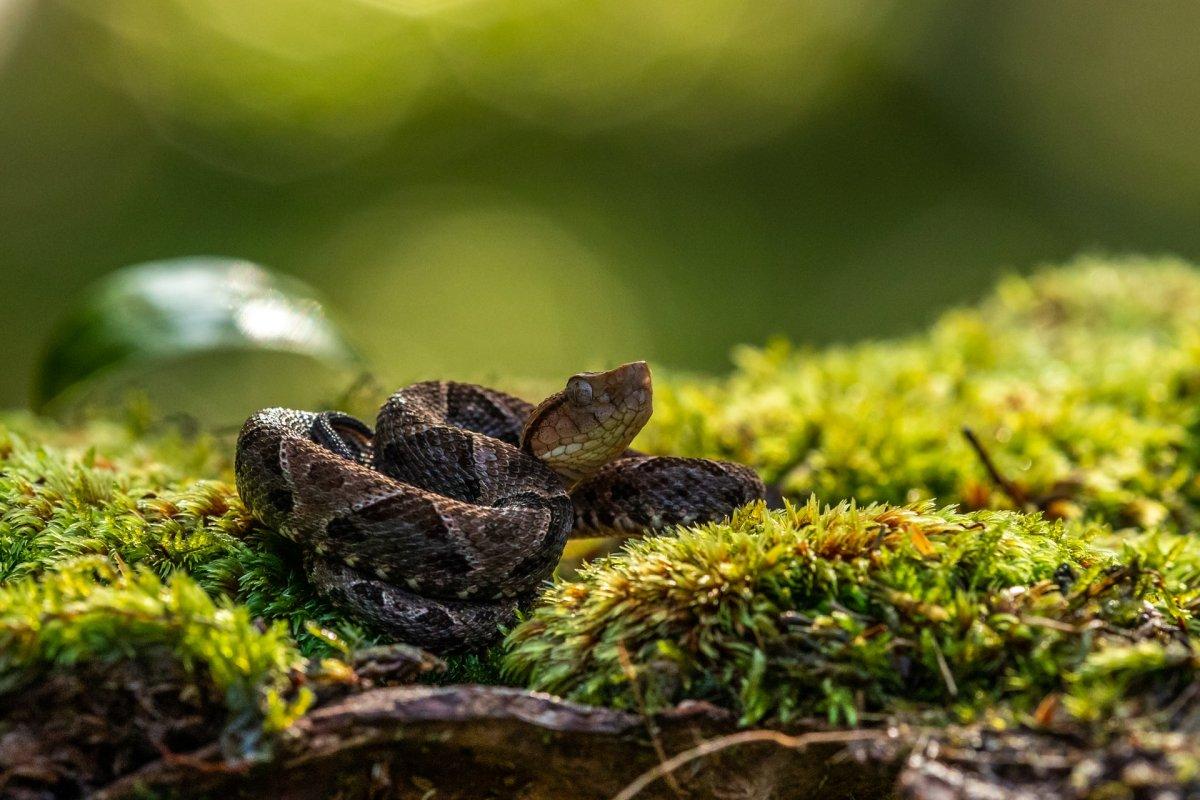
- Name: Fer-de-lance
- Scientific name: Bothrops atrox
- Conservation status:
The fer-de-lance, also known as the common lancehead, is a species of highly venomous pit viper native to northern South America. It is the main cause of death for snakebites in the entire country and is very dangerous due to its great camouflage and outstanding speed.
Not only is this snake a terrestrial threat, but it is also a great swimmer and can also climb trees! Definitely one of the scariest animals you could encounter in Colombia.
23. Black caiman
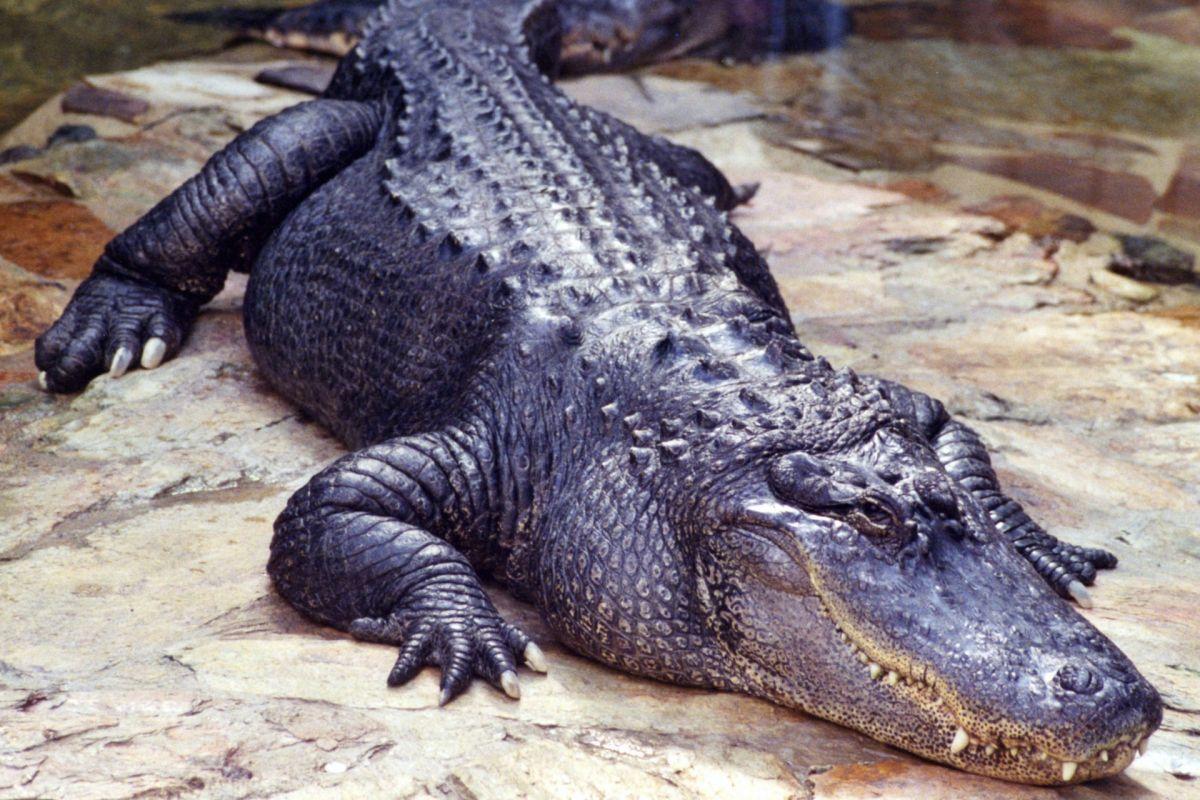
- Name: Black caiman
- Scientific name: Melanosuchus niger
- Conservation status:
The black caiman is a species of large crocodilian native to northwestern South America. It is one of the largest members of the alligator family and even the entire crocodilian order.
This caiman is a carnivorous reptile that lives around bodies of water such as slow-moving rivers, flooded savannas, and lakes. It can reach up to 5 m / 16 ft in length, and is dark-colored, just as its name suggests.
24. Crested eagle
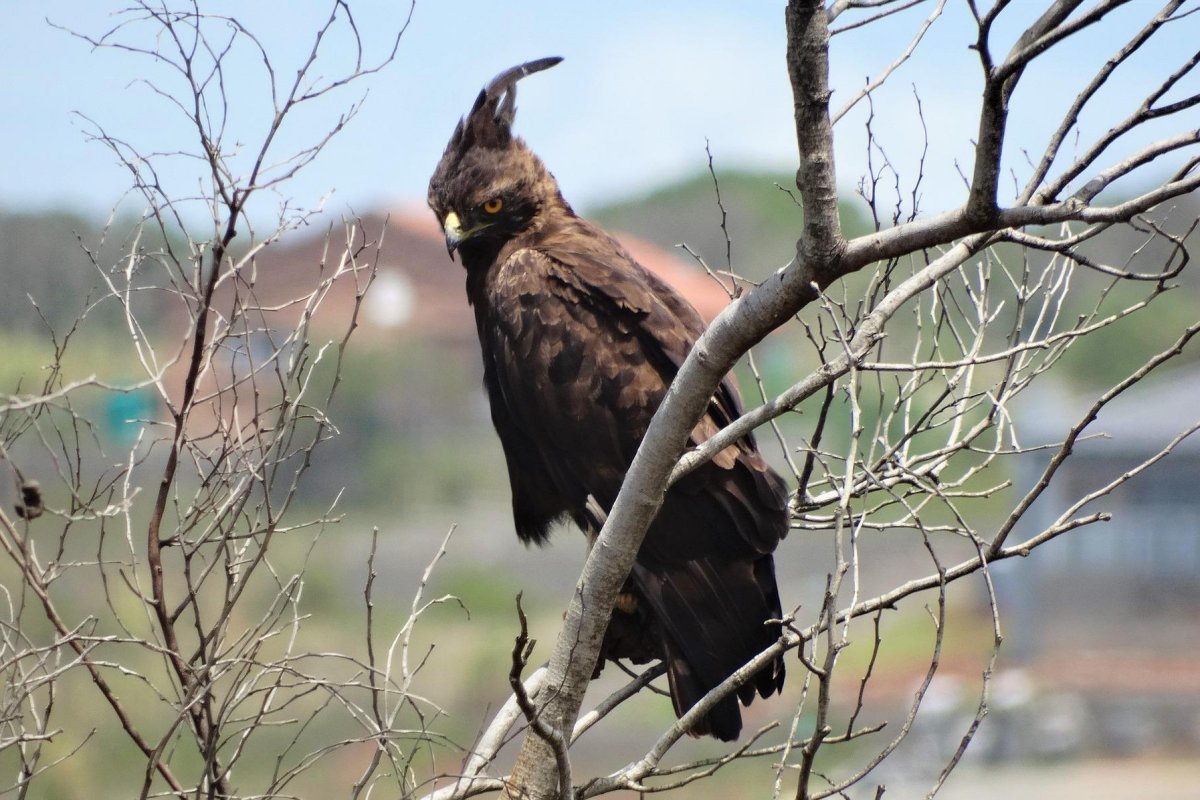
- Name: Crested eagle
- Scientific name: Morphnus guianensis
- Conservation status:
You can find a lot of different animals in Colombia, and even eagles! The crested eagle is a large species of Neotropical eagle. It has a gray or black plumage with a white throat and can be found in Central and South America, including Colombia.
This eagle is a very patient hunter that will wait for most of the time before diving into its prey. It generally avoids competition with the harpy eagle and feeds on smaller prey instead. Talking about which…
25. Harpy eagle
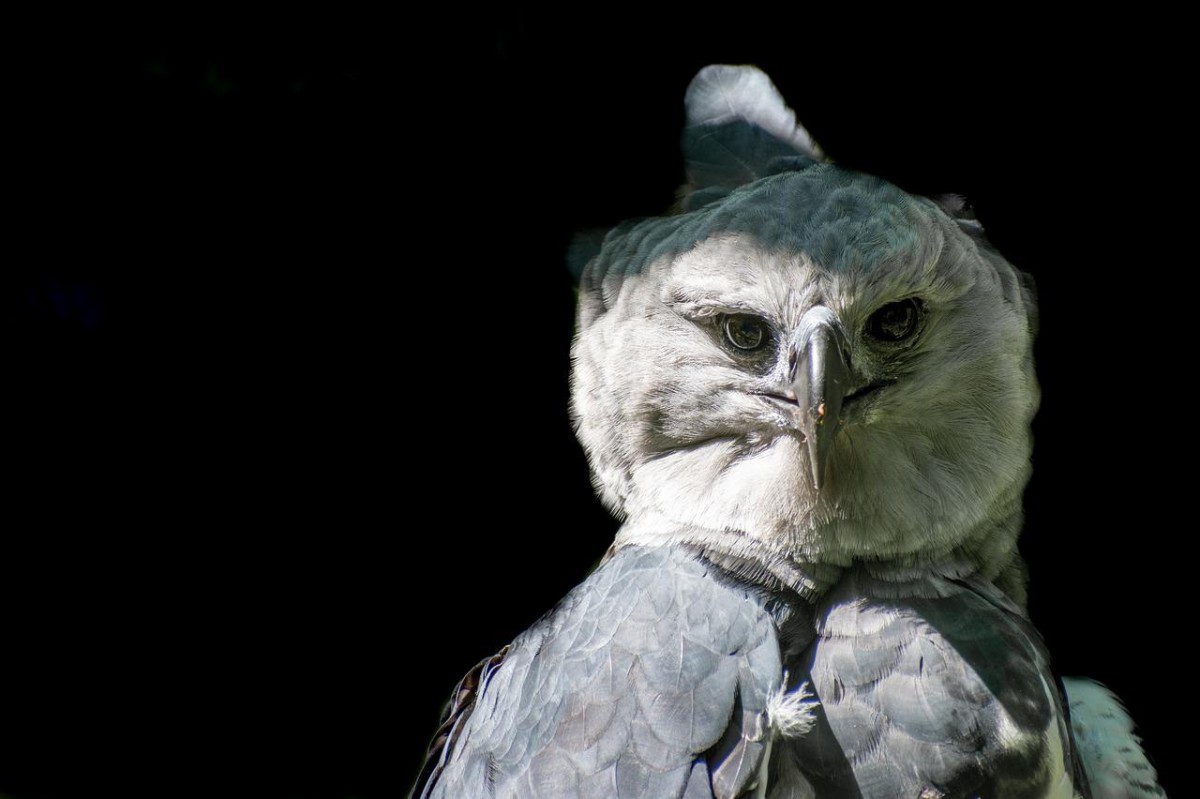
- Name: Harpy eagle
- Scientific name: Harpia harpyja
- Conservation status:
The harpy eagle, also known as the Brazilian harpy eagle or the American harpy eagle, is a large species of eagle native to most of Central and South America. It is the largest and most powerful raptor throughout its entire range, and it lives in tropical rainforests.
Sadly, this eagle is threatened by habitat destruction, and it disappeared from much of its former range because of that. Hopefully, though, national initiatives were launched, hoping to preserve this bird.
26. Collared inca
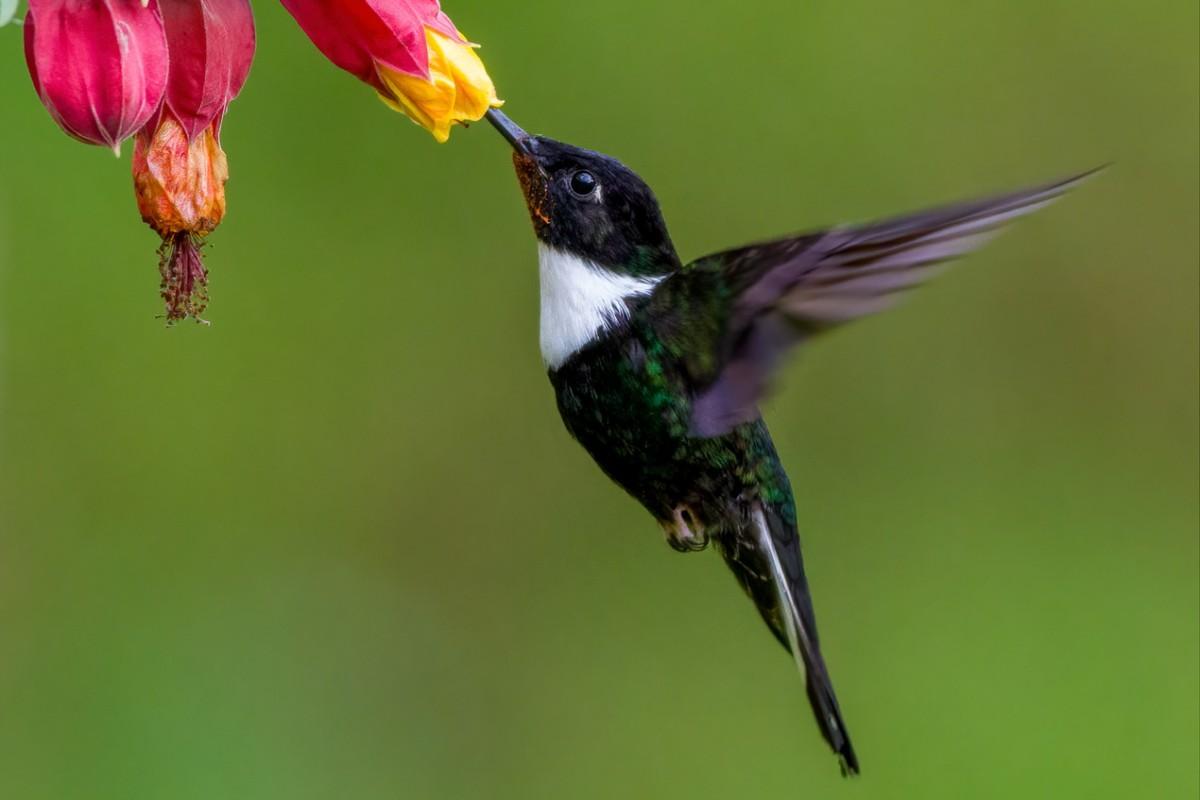
- Name: Collared inca
- Scientific name: Coeligena torquata
- Conservation status:
The collared inca is a species of hummingbird native to northwestern South America, including Colombia, Ecuador, Venezuela, Peru, and Bolivia. It has a distinctive white chest, and it takes energy from flower nectar just like other hummingbirds.
Usually, the collared inca is a solitary animal, and it lives in the open at various altitudes, from 1,800 m / 5,900 ft to 3,000 m / 9,800 ft.
27. Brown spider monkey
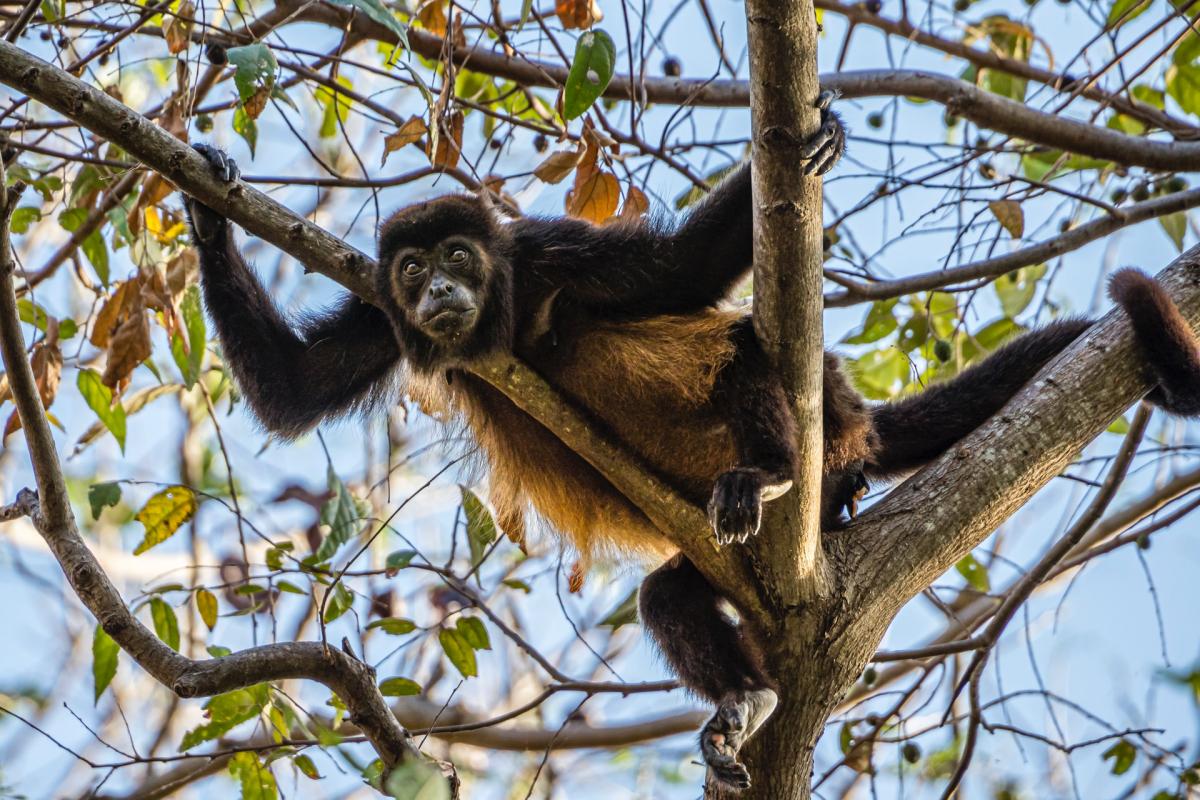
- Name: Brown spider monkey
- Scientific name: Ateles hybridus
- Conservation status:
The brown spider monkey, also known as the variegated spider monkey, is a species of spider monkey, a type of New World monkey, native to a very small area of Venezuela and Colombia. Just like other spider monkeys, it has a long prehensile tail and long and slender limbs.
Most of the time, it is seen high up in the trees, but it will come down to feed and drink. It is sadly on the brink of extinction, mostly due to habitat destruction: around 98 percent of its habitat has already disappeared and its global population has decreased by more than 80 percent.
28. Colombian white-faced capuchin
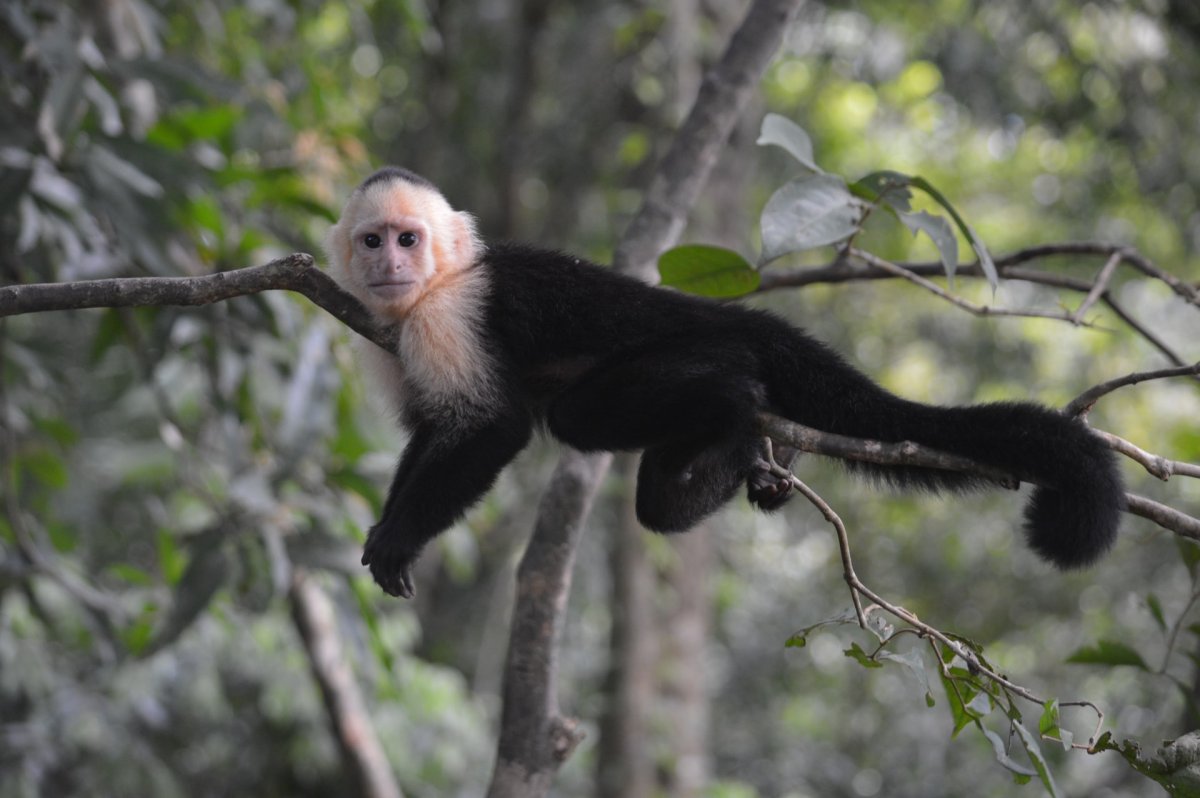
- Name: Colombian white-faced capuchin
- Scientific name: Cebus capucinus
- Conservation status:
The Colombian white-faced capuchin, also known as the white-throated capuchin or the white-headed capuchin, is a medium-sized species of New World monkey native to Colombia, Panama, and Ecuador. It is a playful monkey that is sometimes illegally kept as a pet and even tamed.
This capuchin has a mostly black body with a distinctive white head and chest. It is considered vulnerable due to its small range and habitat loss.
29. Western mountain coati
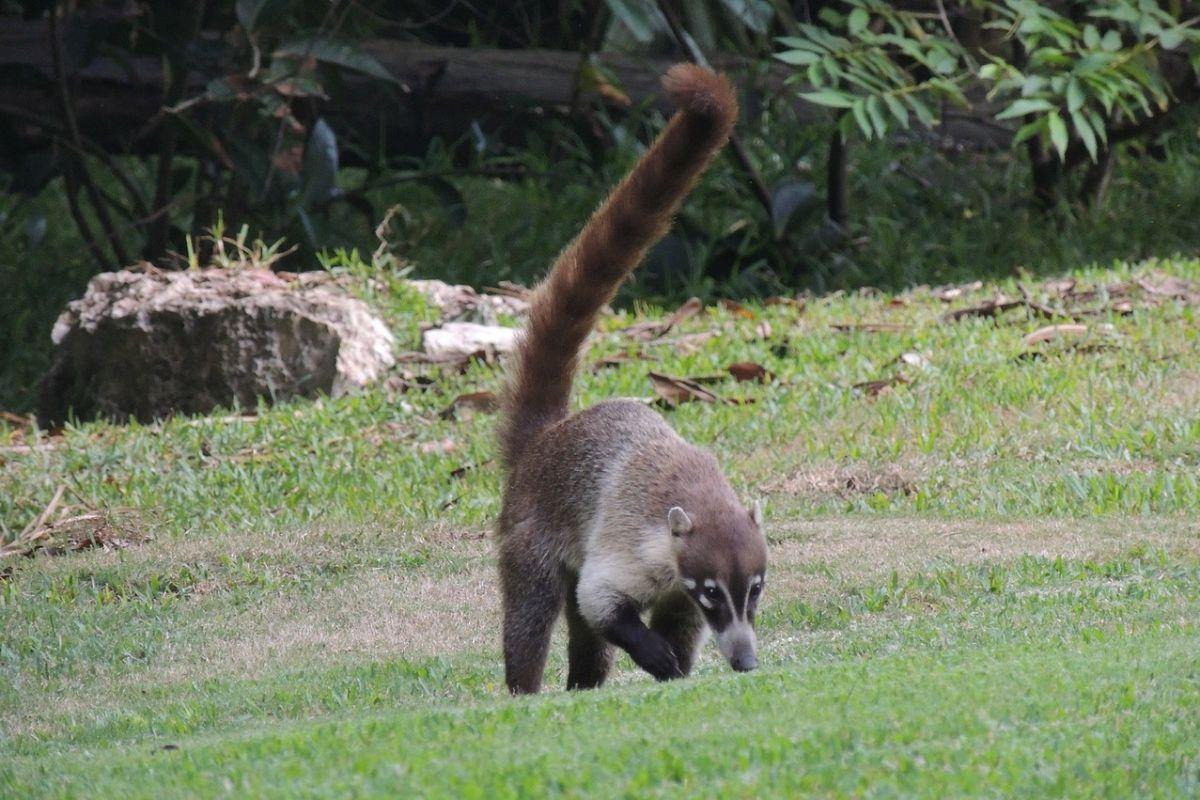
- Name: Western mountain coati
- Scientific name: Nasuella olivacea
- Conservation status:
The western mountain coati, also known as the western dwarf coati, is a small species of coati native to the cloud forests of Colombia, Venezuela, and Ecuador. It can be found at altitudes of 1,300 to 4,250 m / 4,270 to 13,940 ft, and lives in a narrow strip that runs from Ecuador to Venezuela.
This species is very poorly known, and it is quite rare in captivity. Even though some zoos claim to have western mountain coatis, some of them were actually misidentified.
30. Crab-eating raccoon
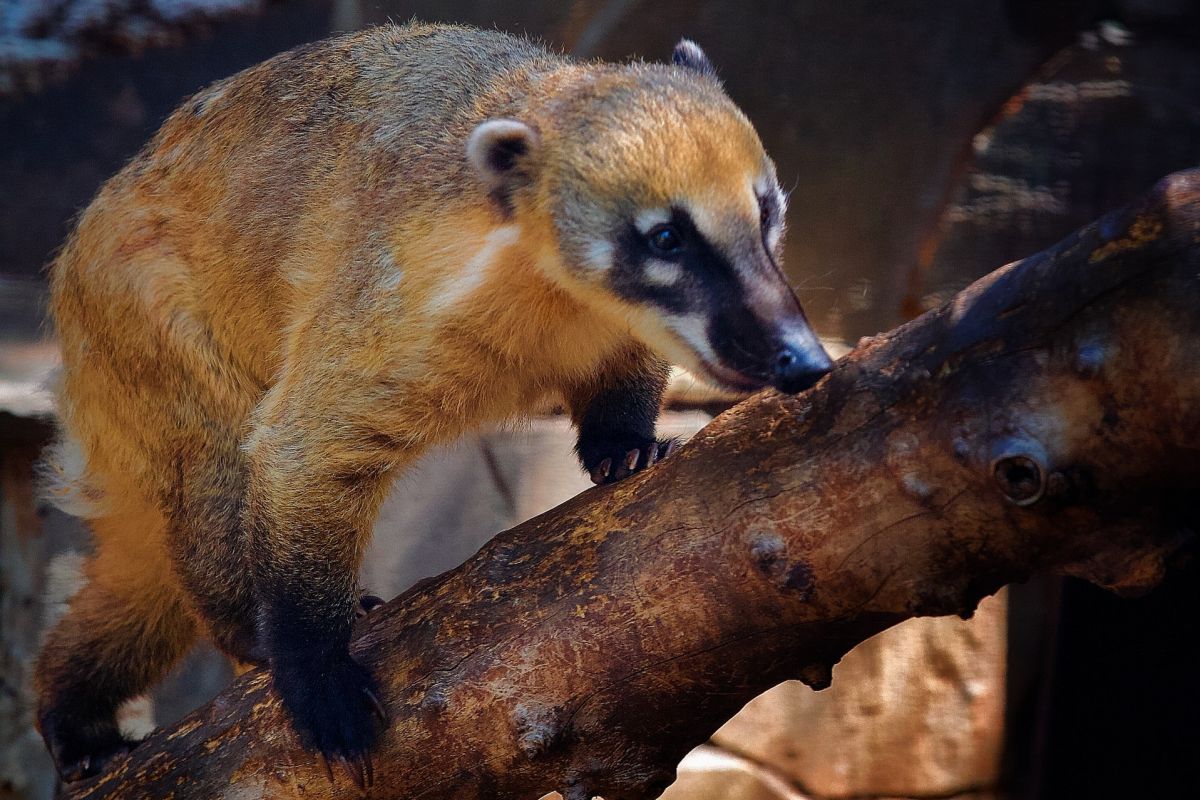
- Name: Crab-eating raccoon
- Scientific name: Procyon cancrivorus
- Conservation status:
The crab-eating raccoon, also known as the South American raccoon, is a species of raccoon native to much of South America and Central America. It can usually be seen in jungle and marshy areas, from Costa Rica to northern Argentina.
As its name suggests, this raccoon eats crab, but also crayfish, lobster, and crustaceans. Like other raccoons, it is an omnivore nonetheless and will feed on whatever it can, from turtle eggs to fruits and small amphibians.
31. Collared peccary
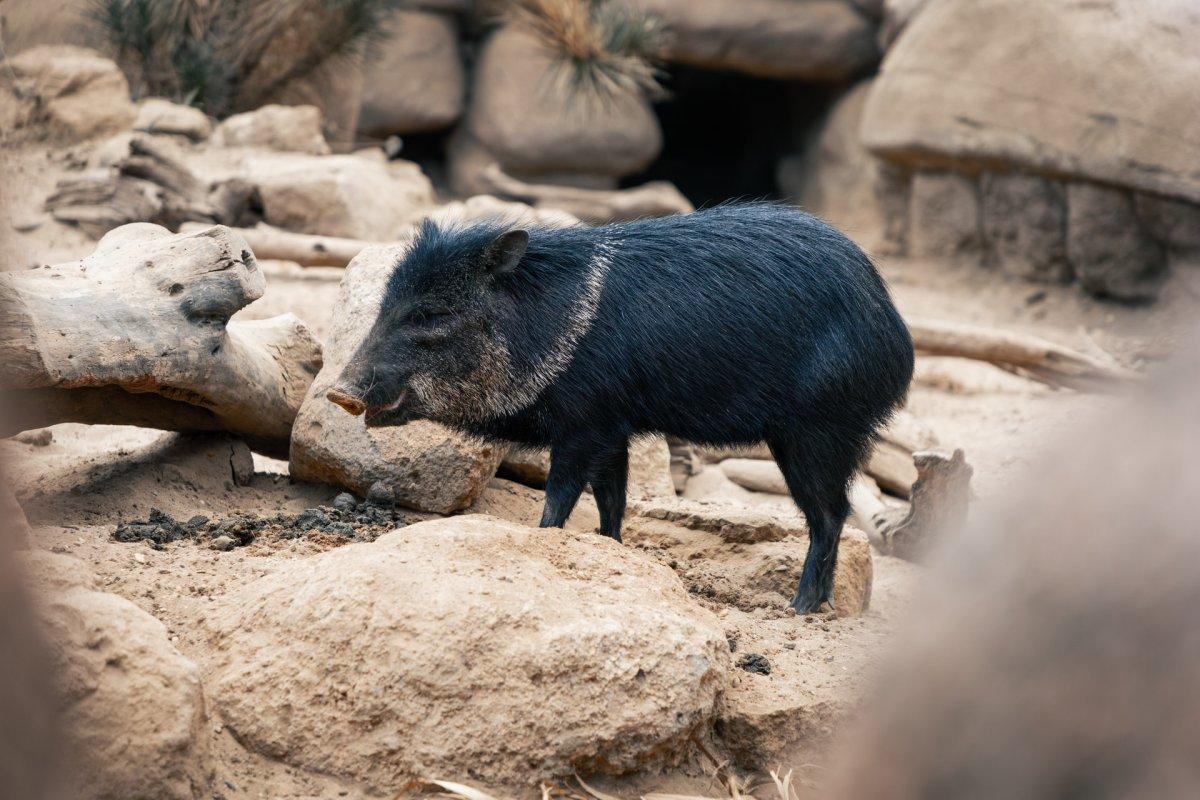
- Name: Collared peccary
- Scientific name: Pecari tajacu
- Conservation status:
The collared peccary, also known as the “javelina”, the “báquiro”, the “saíno” or the musk hog, is a species of even-toed mammal native to North, Central, and South America. Despite this, it mostly lives in the northern part of South America, usually in tropical and subtropical areas.
It is an herbivore that feeds on fruits, roots, palm nuts, cactus, and other vegetation, but it can also occasionally eat dead birds, rodents, and lizards if needed.
32. Ocelot
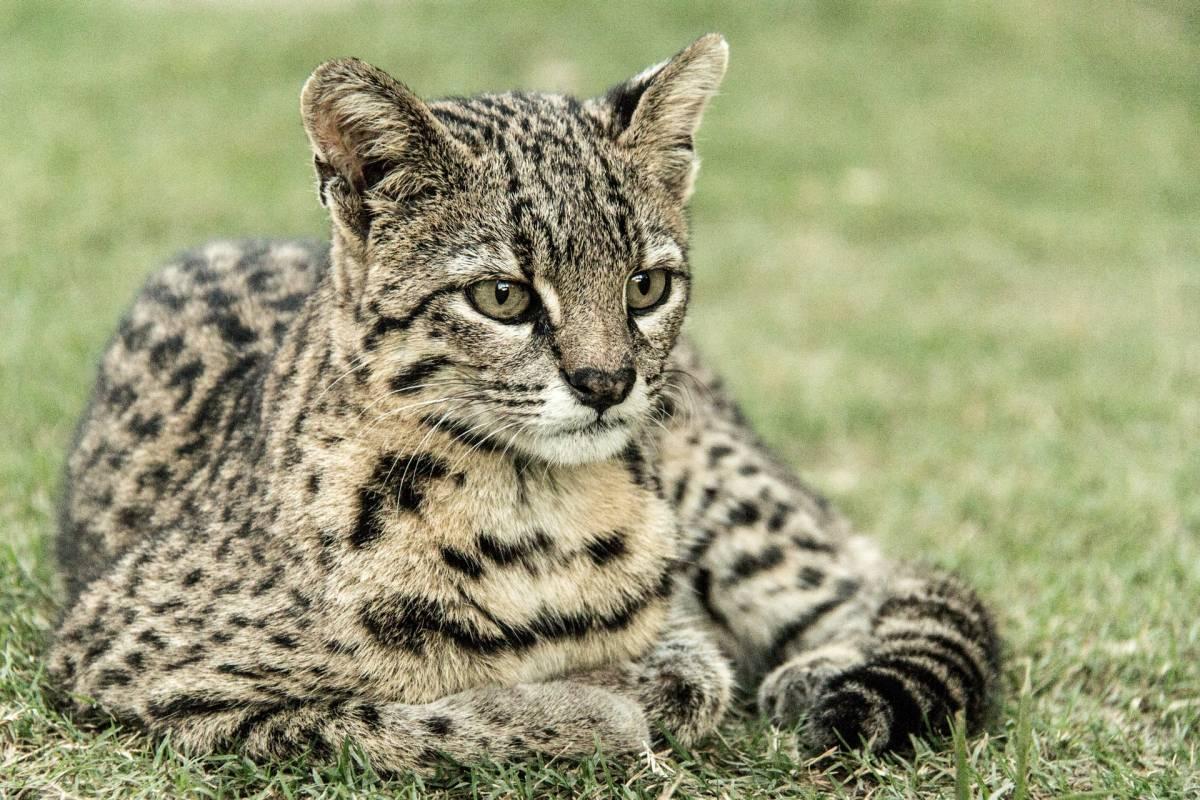
- Name: Ocelot
- Scientific name: Leopardus pardalis
- Conservation status:
The ocelot is a medium-sized species of wild cat native to a large range from the southwestern United States to northern Argentina. It inhabits areas next to bodies of water, with dense vegetation and high prey availability.
Even though the ocelot is considered of least concern, for now, it is seriously threatened by habitat loss, traffic accidents, and hunting. Because of this, the ocelot populations in South America are going to be closely monitored in the next decade.
33. Crab-eating fox
- Name: Crab-eating fox
- Scientific name: Cerdocyon thous
- Conservation status:
It looks like crabs are having a hard time in Colombia: after the crab-eating raccoon, I present to you the crab-eating fox!
Also known as the wood fox, the bushdog, the forest fox, or the maikong, the crab-eating fox is medium-sized species of canid endemic to central South America. Outside of crabs, it will feed on insects, rodents, and birds, and is an opportunistic omnivore. It plays an important role in controlling the populations of rodents and harmful insects.
34. Orca
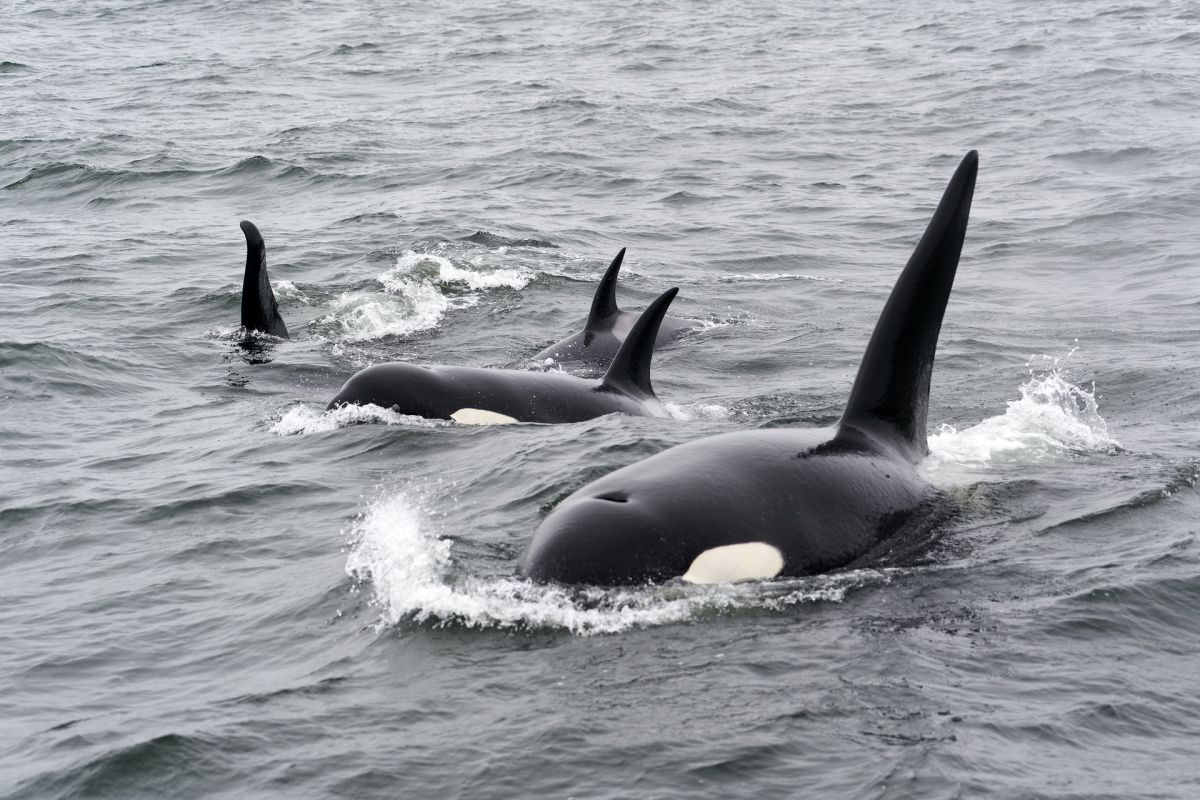
- Name: Orca
- Scientific name: Orcinus orca
- Conservation status:
The orca, also known as the killer whale, is the largest member of the oceanic dolphin family and is a toothed whale. It is one of the most dreaded marine predators on the planet and has a characteristic black and white body.
Despite its scary reputation, the orca has never killed a human, though captive killer whales can be very dangerous for their handlers. While it mostly lives in polar areas of the planet, it will migrate to tropical areas such as the Colombian coastline. Because of its enormous range (basically every ocean and most seas on the planet), it is very difficult to estimate the global population of orcas.
35. Hippopotamus
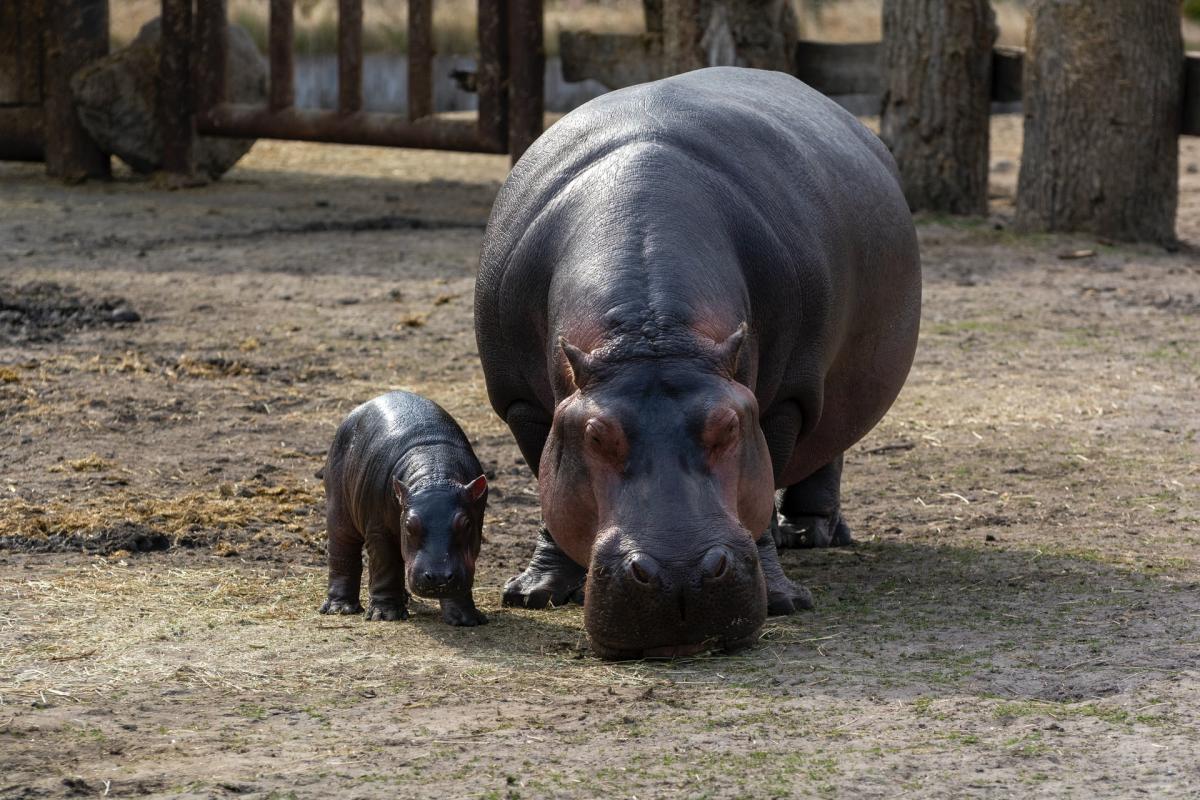
- Name: Hippopotamus
- Scientific name: Hippopotamus amphibius
- Conservation status:
Yes, hippopotamus! Believe it or not, the hippo is an introduced species in Colombia. They were part of Pablo Escobar’s personal zoo, alongside other animals such as zebras and giraffes.
However, after Escobar’s death, it was considered too expensive to move the hippos from the hacienda and they were left on their own. Now, there is a population around the Río Magdalena, and a documentary about them was made by National Geographic!
—
So there you have them, these were my 35 Colombia native animals. I hope you enjoyed this list and that you learned something new today.
In case you want to learn more about animals in the country, feel free to keep reading, as I still have lots of things to tell you about:
Endangered Animals of Colombia
This is definitely the saddest part of the list, but it is very important to raise awareness. Because of this, let’s go through the list of endangered animals in Colombia.
Here are the animals in danger of extinction in Colombia.
- Colombian grebe
- Brown spider monkey
- Orinoco crocodile
- Lemur leaf frog
- Hawksbill turtle
- Pirri range stubfoot toad
- and 116 more…
- Carchi Andes toad
- Burrowes’ giant glass frog
- Banded ground-cuckoo
- Giant otter
- Sapphire-bellied hummingbird
- and 231 more…
To see the full list of endangered species in Colombia, head over to the International Union for Conservation of Nature’s Red List.
What is the National Animal of Colombia?
The national animal of Colombia is the Andean condor.
The Andean condor is the largest flying bird in the world, with a maximum wingspan of 3.3 m / 10 ft 10 in! It is also the largest bird of prey and is a member of the vulture family which majorly feeds on carrion, usually those of cattle or deer.
In fact, it is featured in multiple South American coats of arms, including Ecuador, Mexico, Argentina, and Colombia, and is overall one of the most important symbols from the continent.
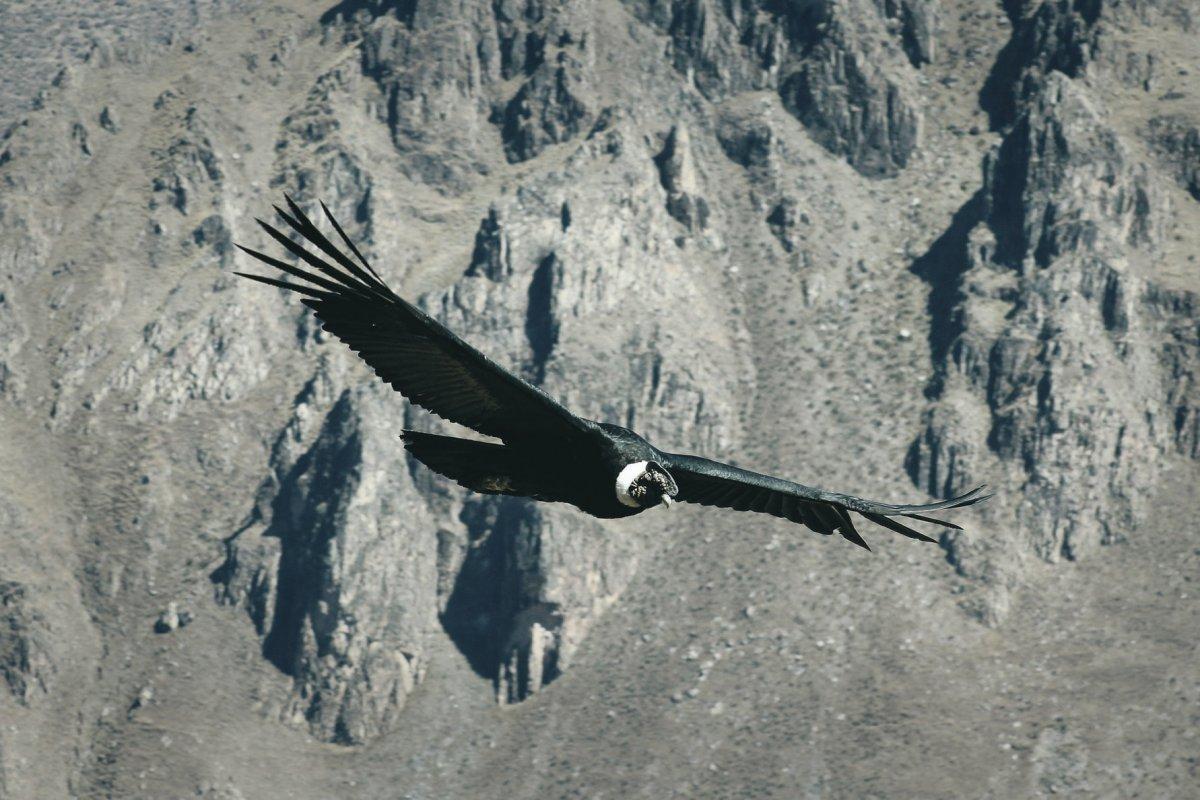
How Many Animals Native to Colombia?
What is the diversity of native animals in Colombia?
Let’s look at the total number of species of Chordata (mammals, birds, fishes, and reptiles).
Total number of animal species in Colombia: 6,534 (14,422 in total in South America)
More About Animals in the World!
Loved these Colombia wildlife facts? Want to see what animals live in other countries?
Then check out these posts:
Or click here to see ALL the facts up on the blog! Spoiler alert: there’s A LOT of them.
Share the knowledge! Click on the buttons below to share information about these famous animals in Colombia with your friends, and help them learn more about the world 🙂
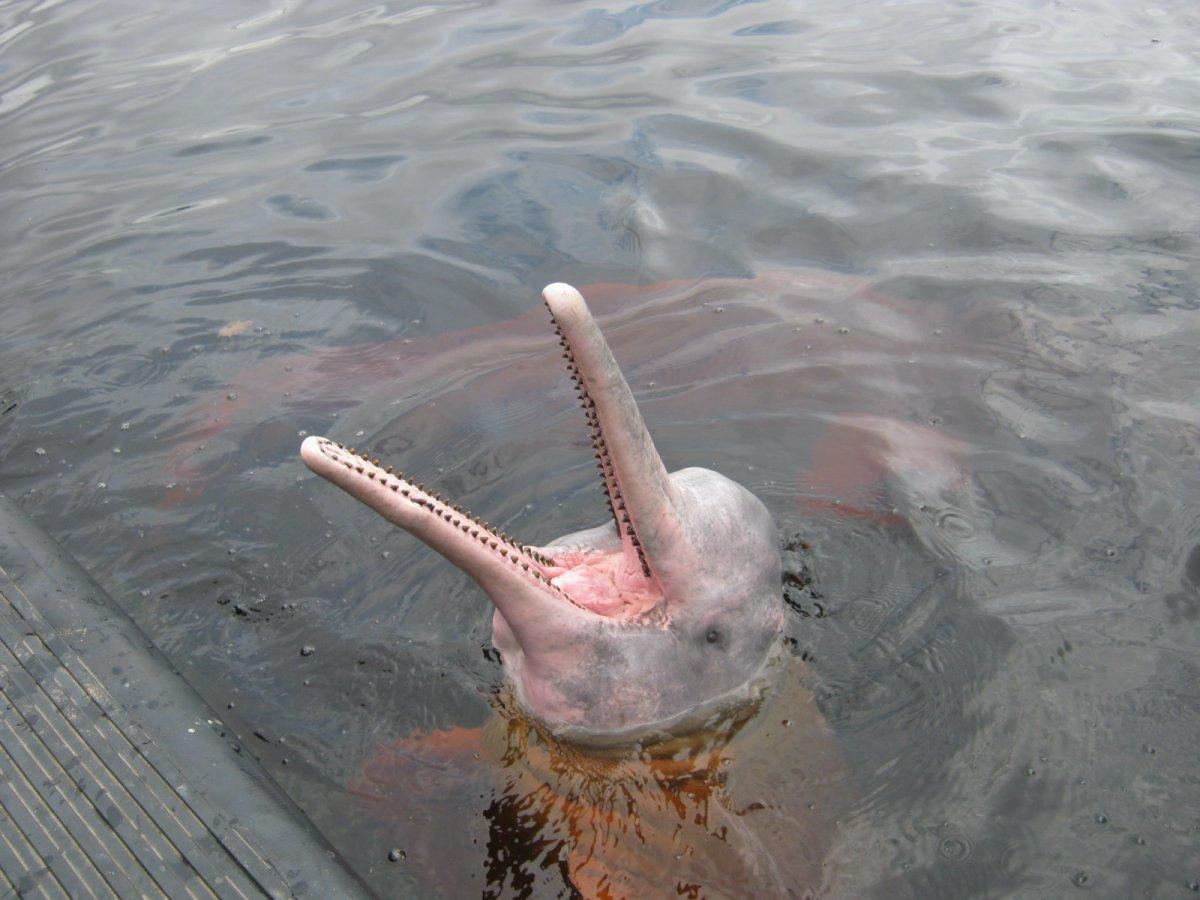
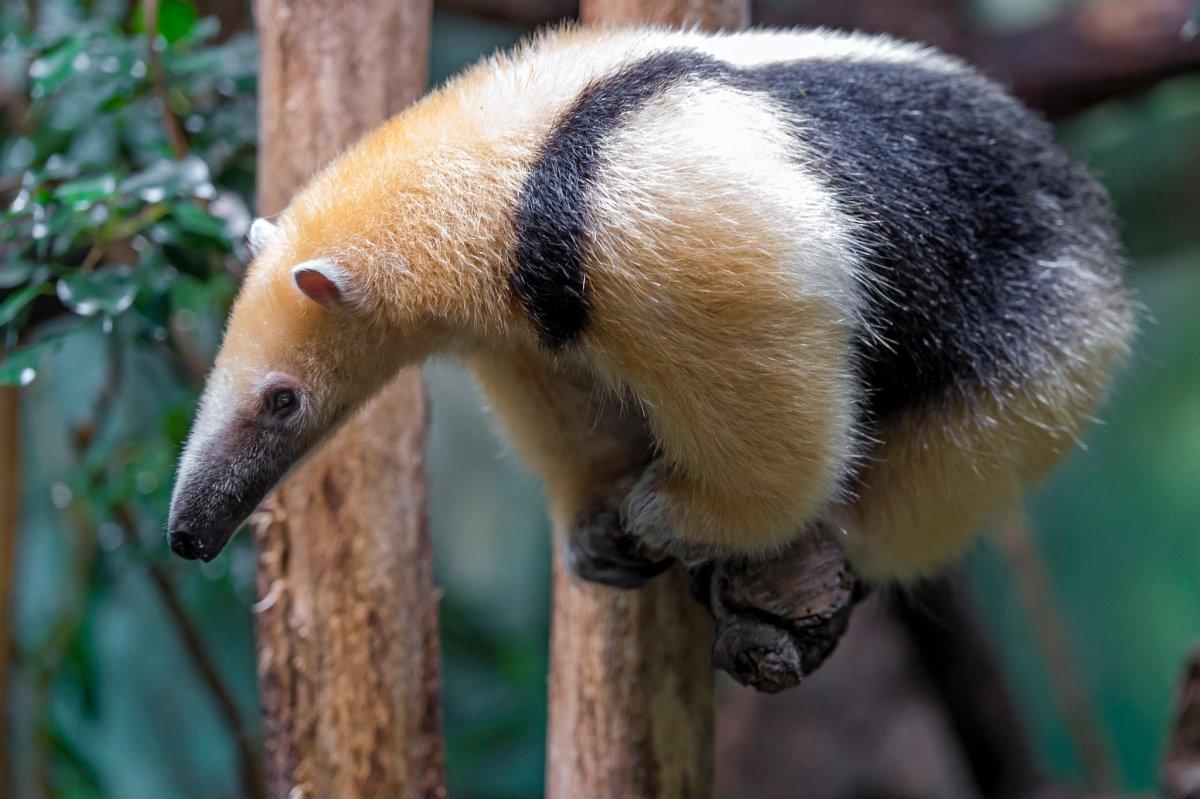
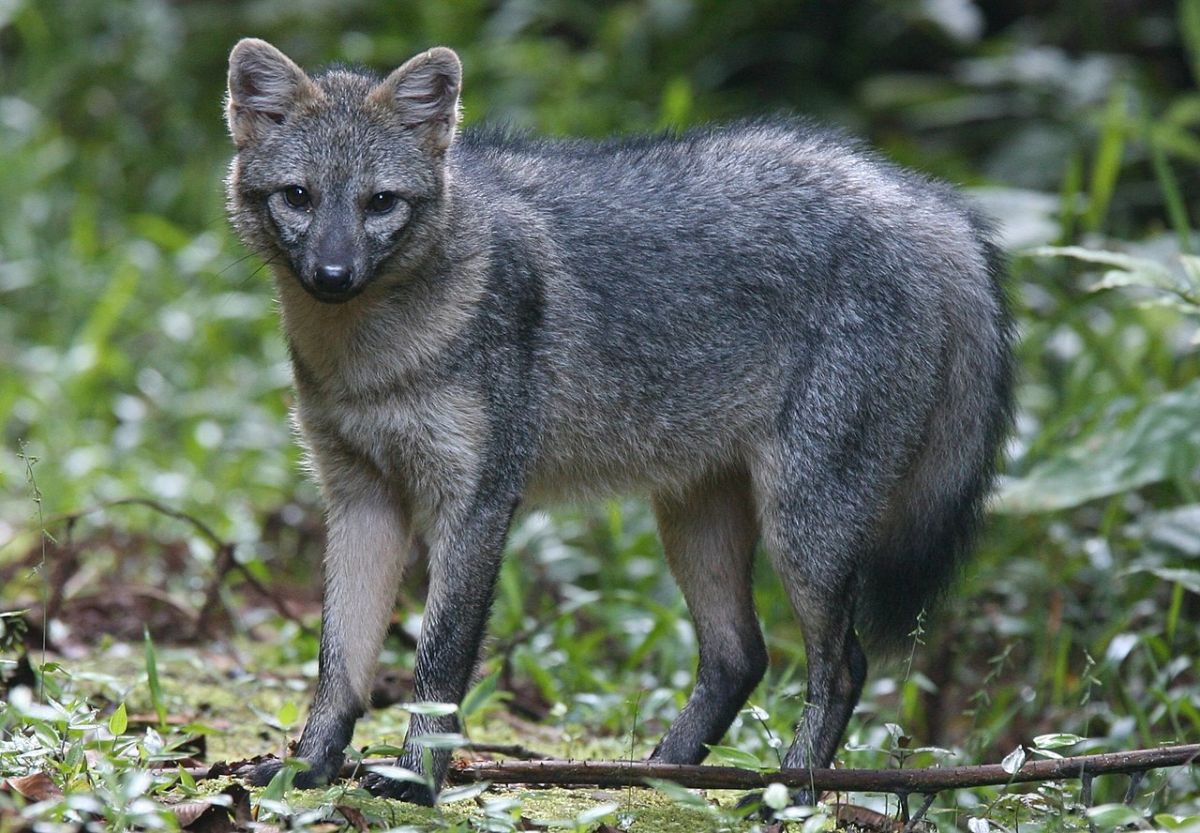

![10 Wild Animals in Micronesia [Wildlife in Micronesia]](https://www.kevmrc.com/wp-content/uploads/2023/01/10-wild-animals-in-micronesia.jpg)
![14 Wild Animals in Ivory Coast [Wildlife in Ivory Coast]](https://www.kevmrc.com/wp-content/uploads/2022/12/14-wild-animals-in-ivory-coast.jpg)
![21 Wild Animals in Singapore [Wildlife in Singapore]](https://www.kevmrc.com/wp-content/uploads/2022/12/21-wild-animals-in-singapore.jpg)